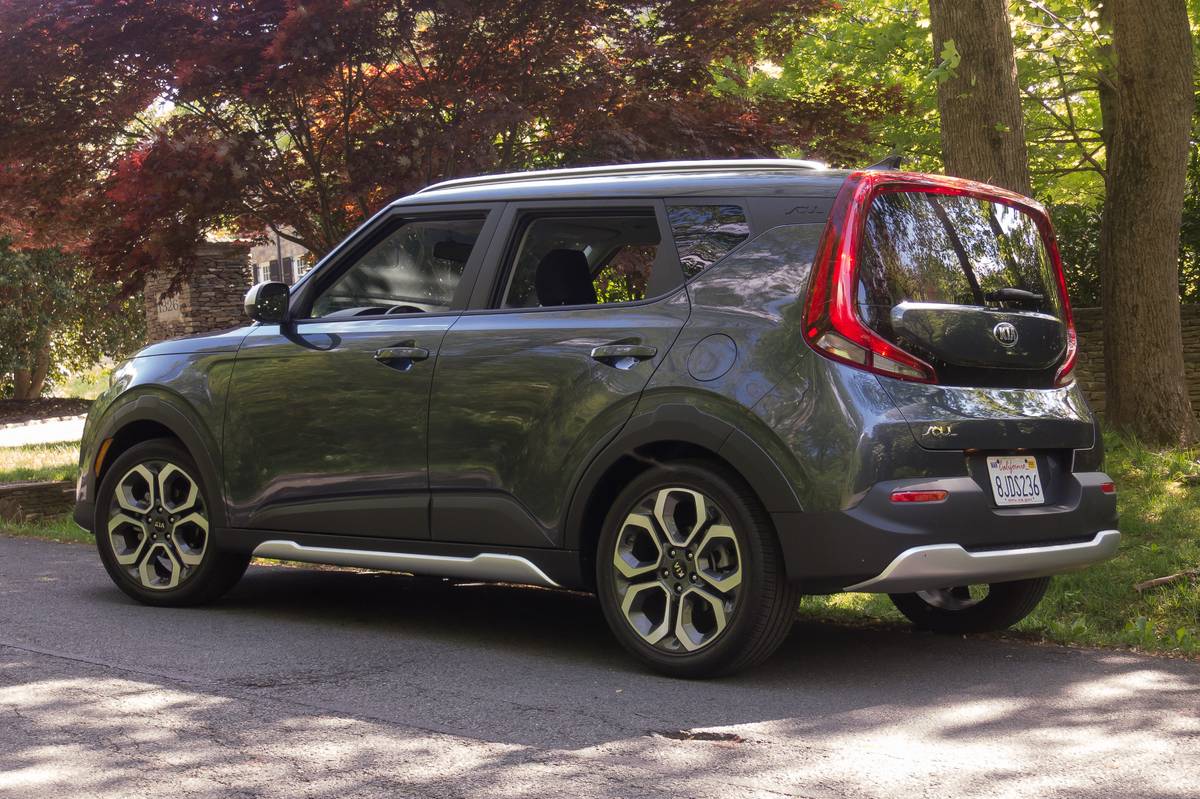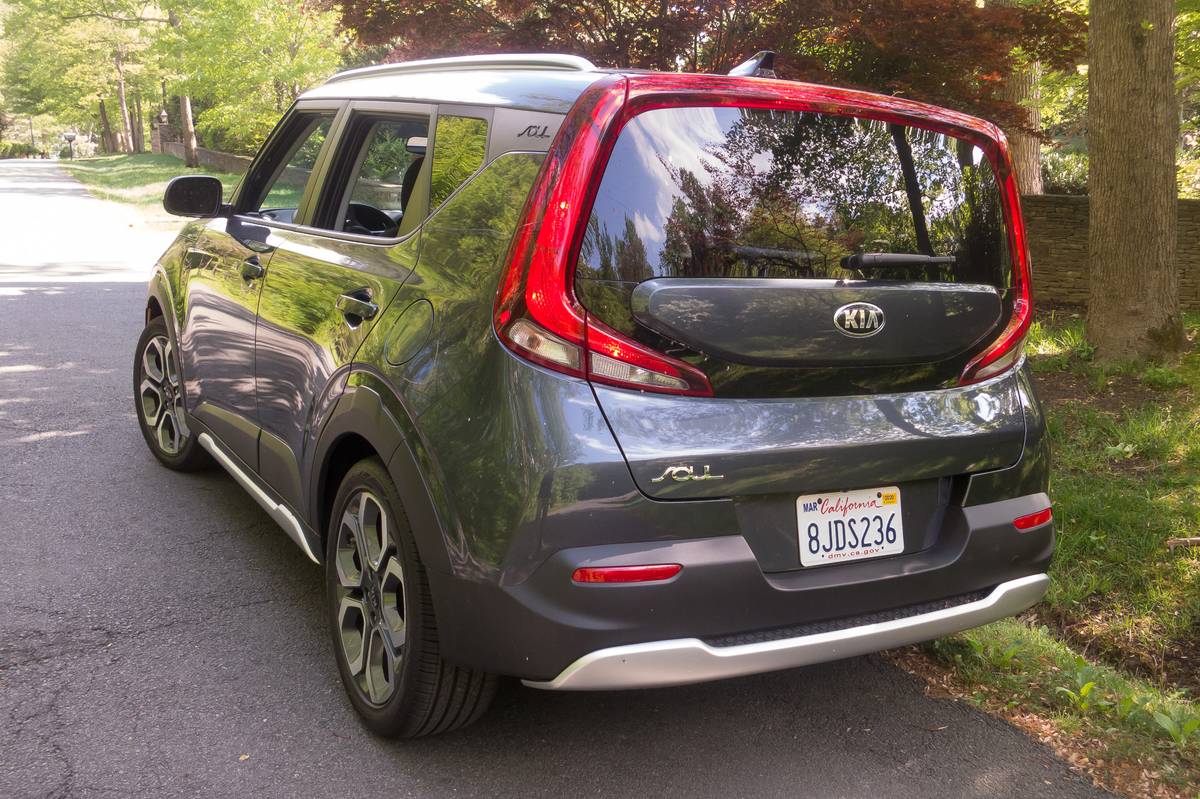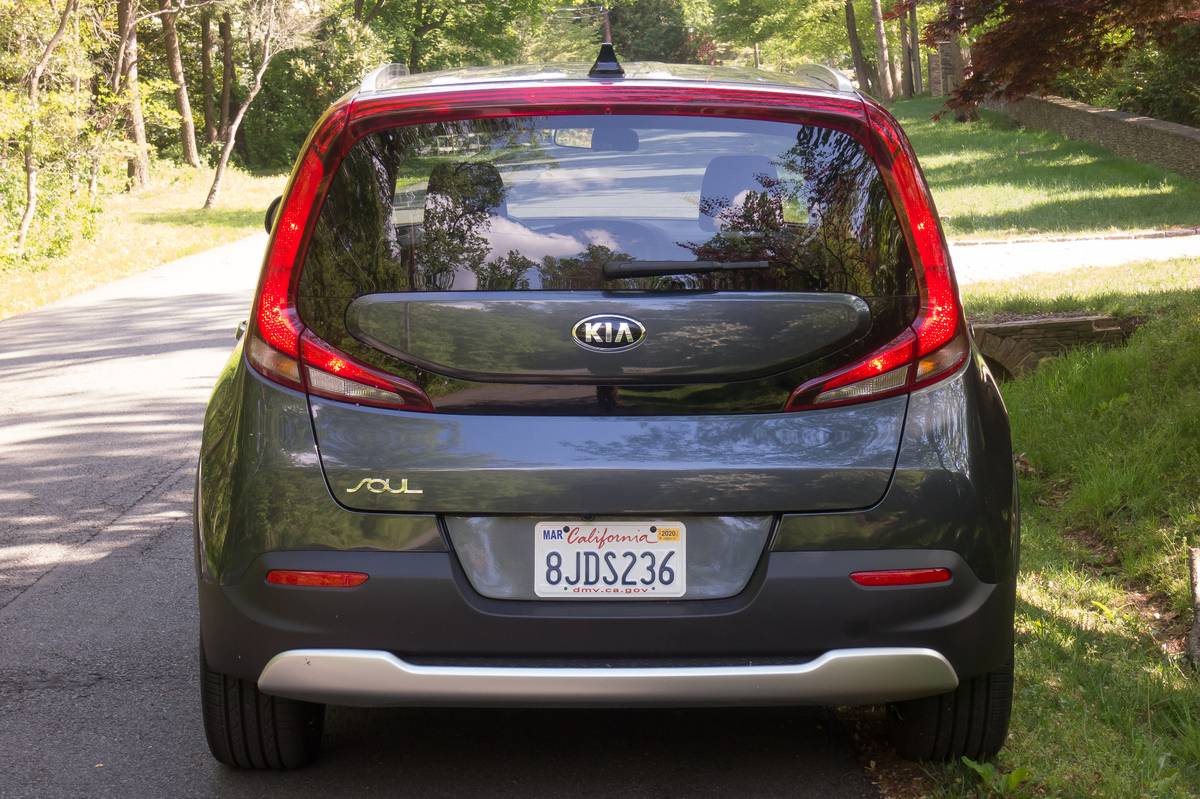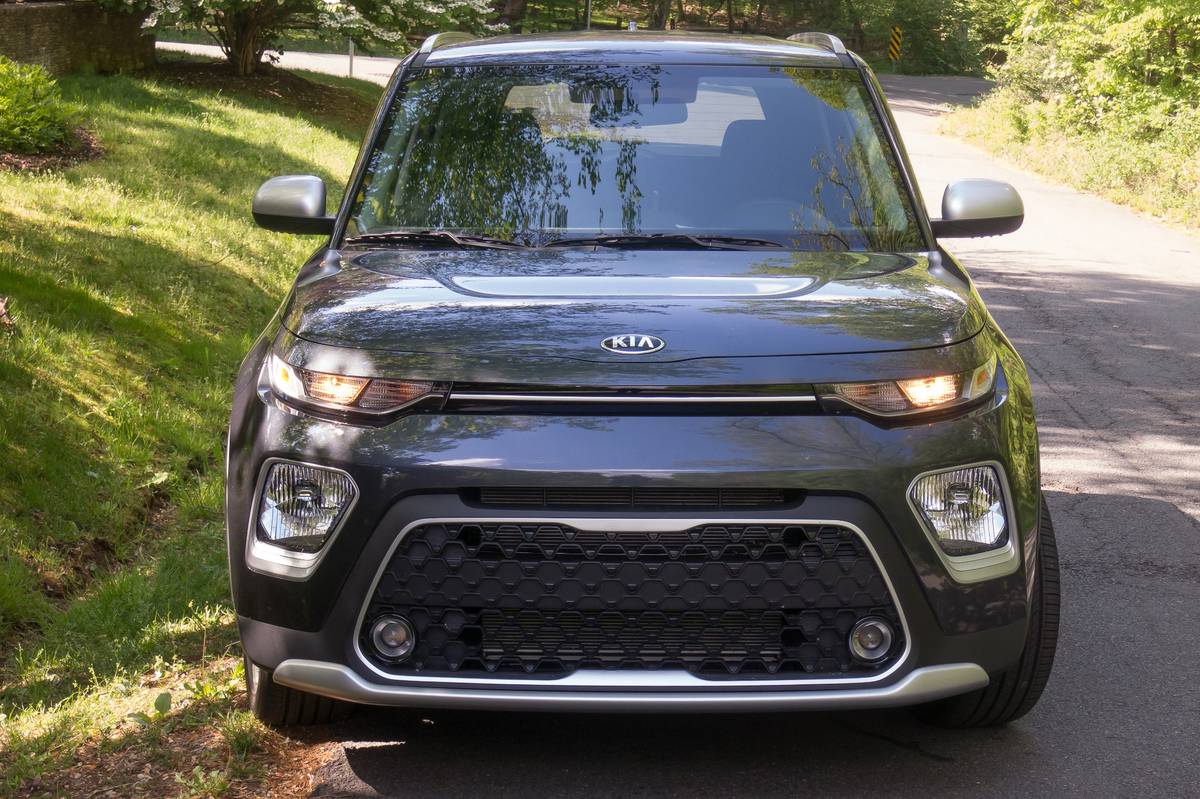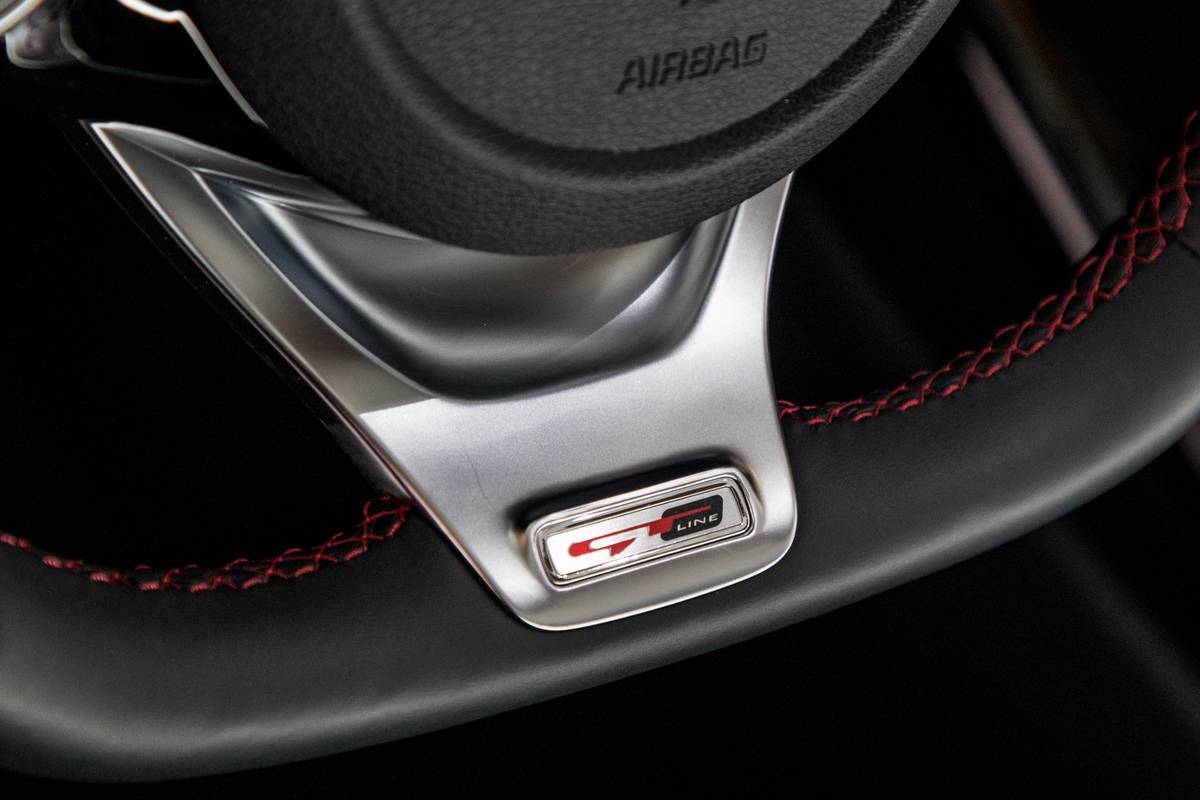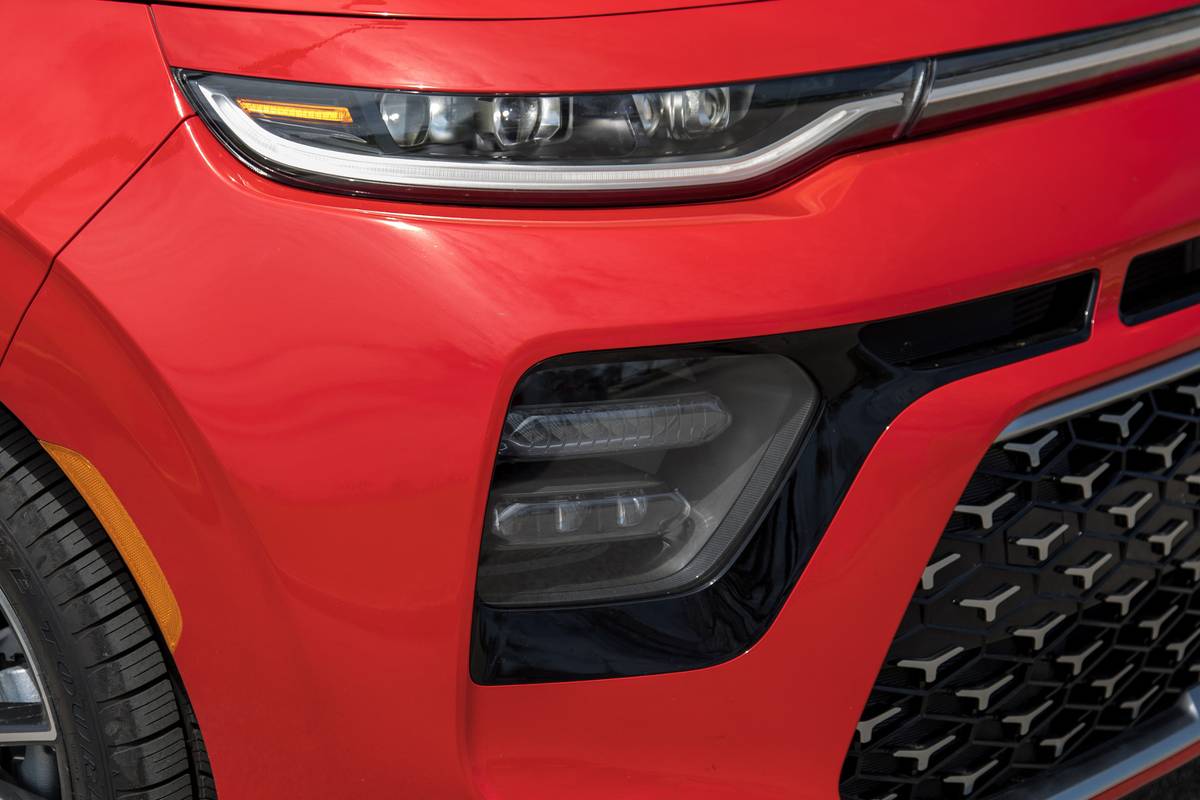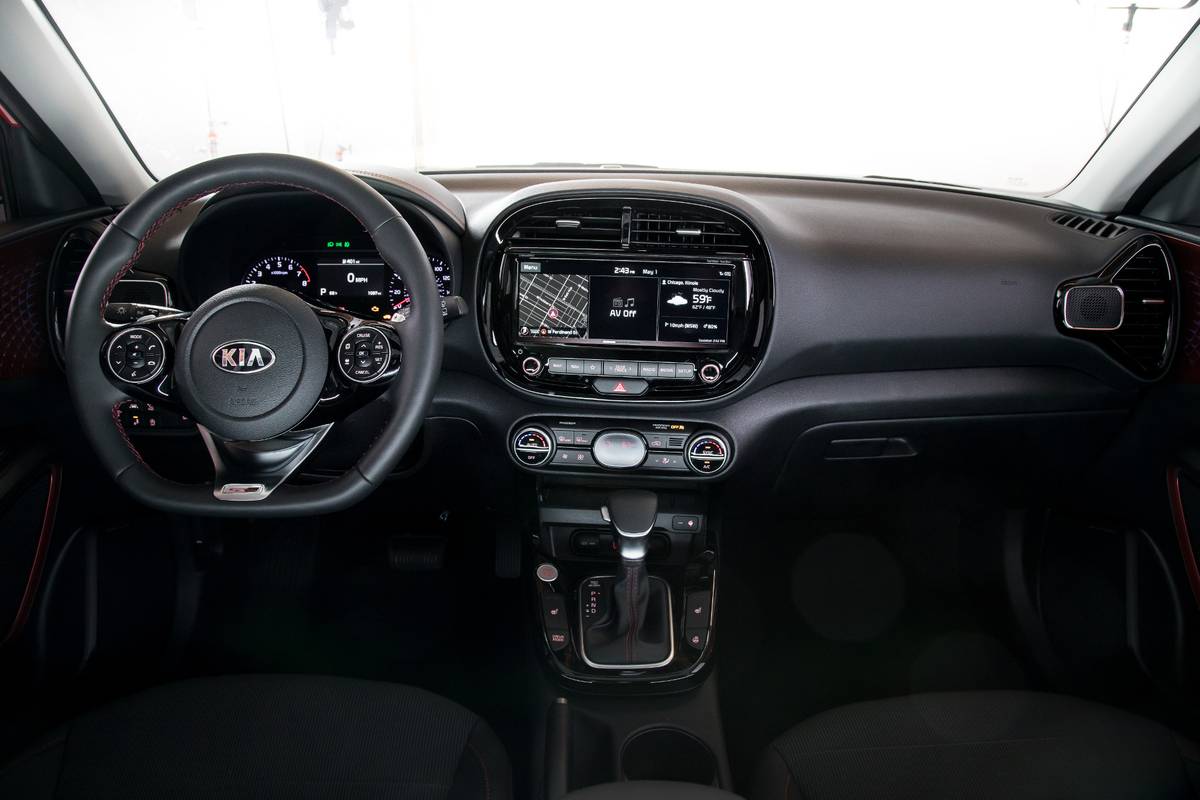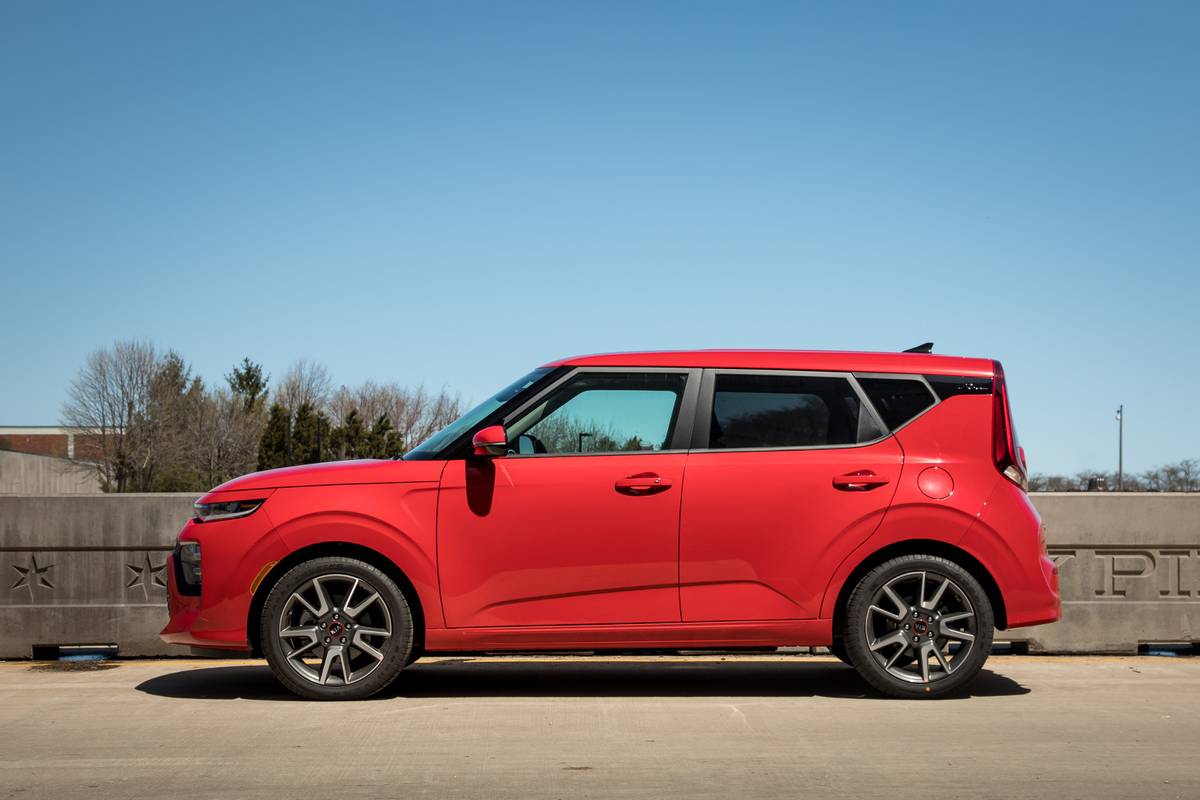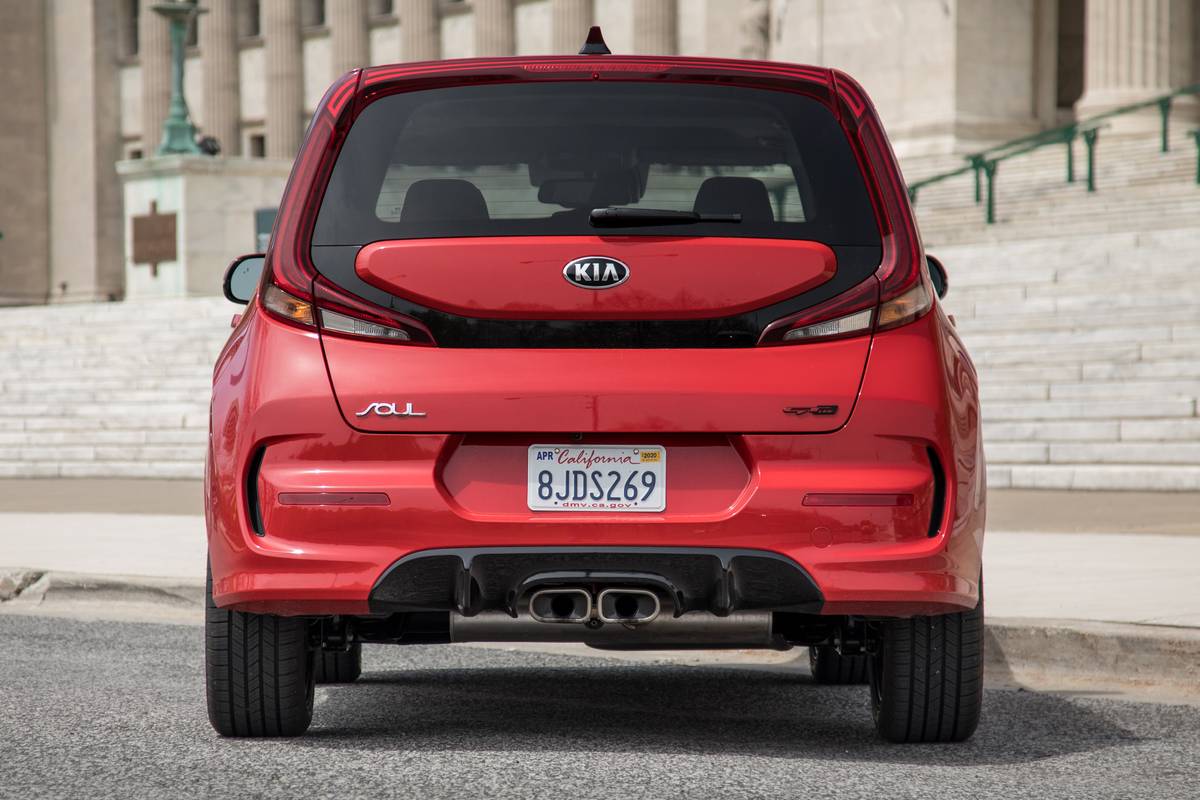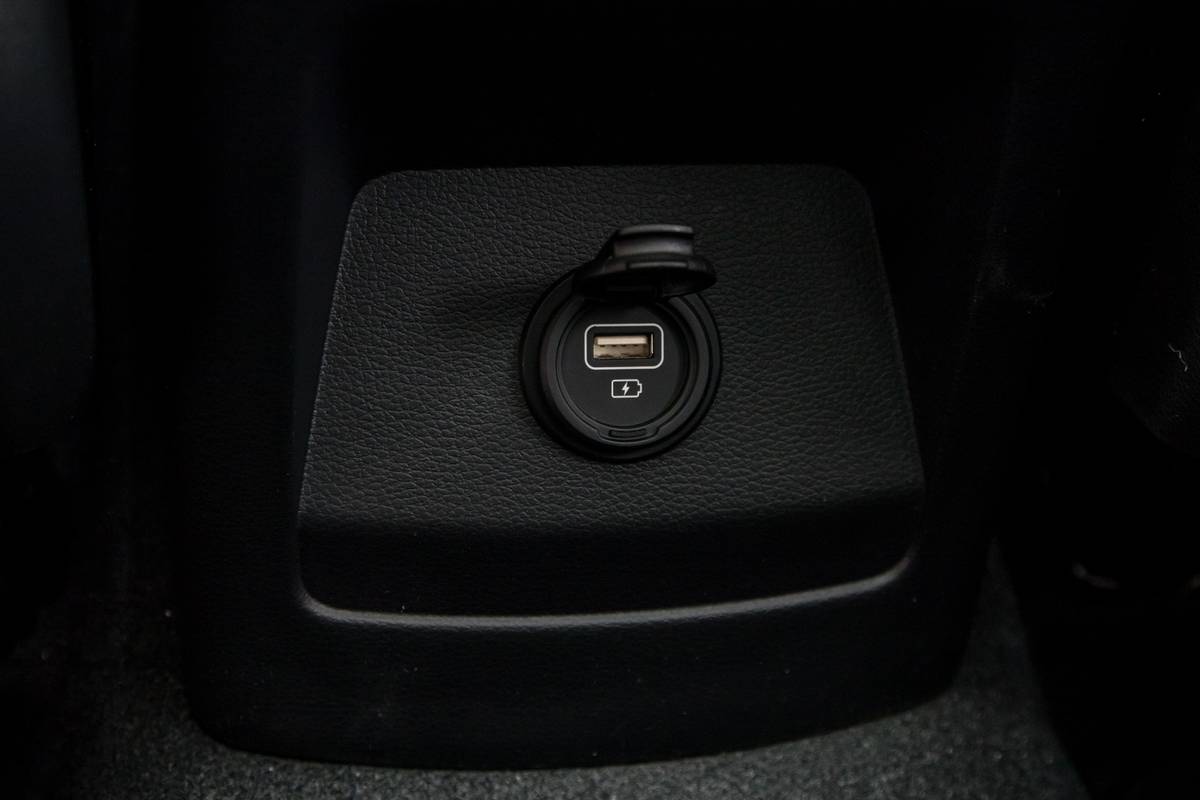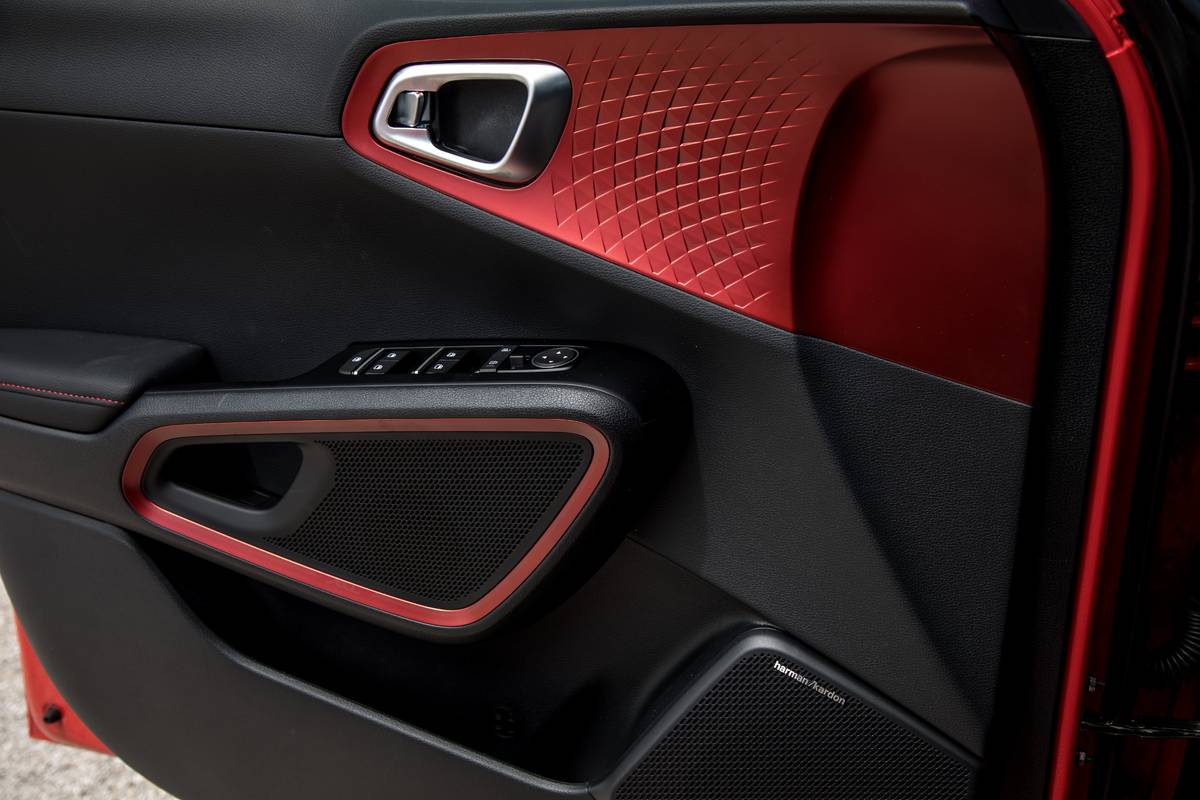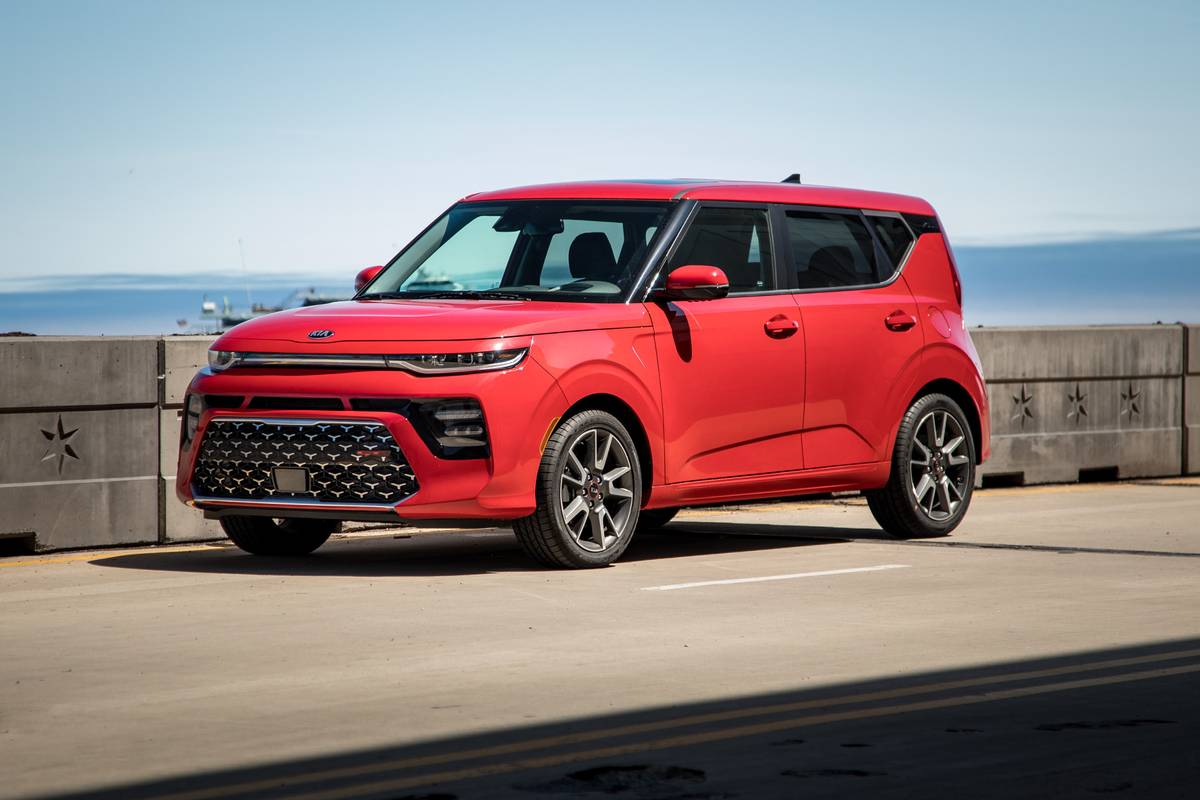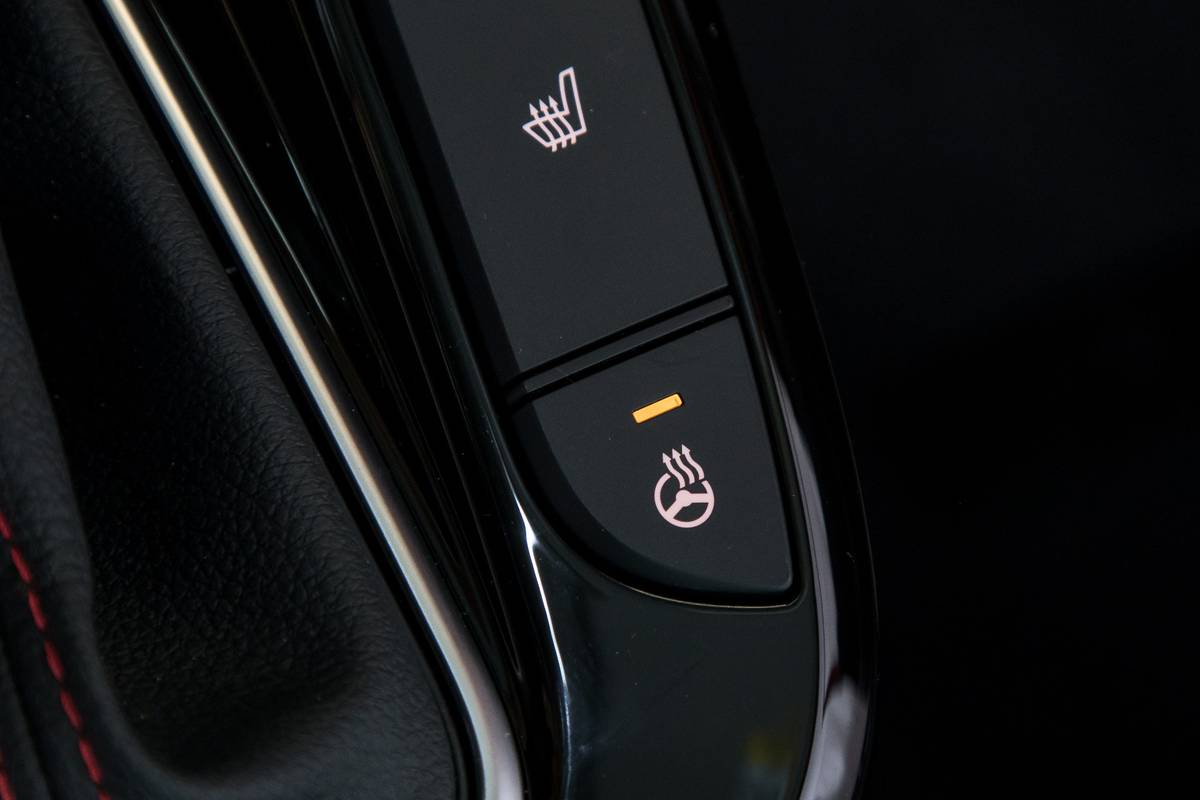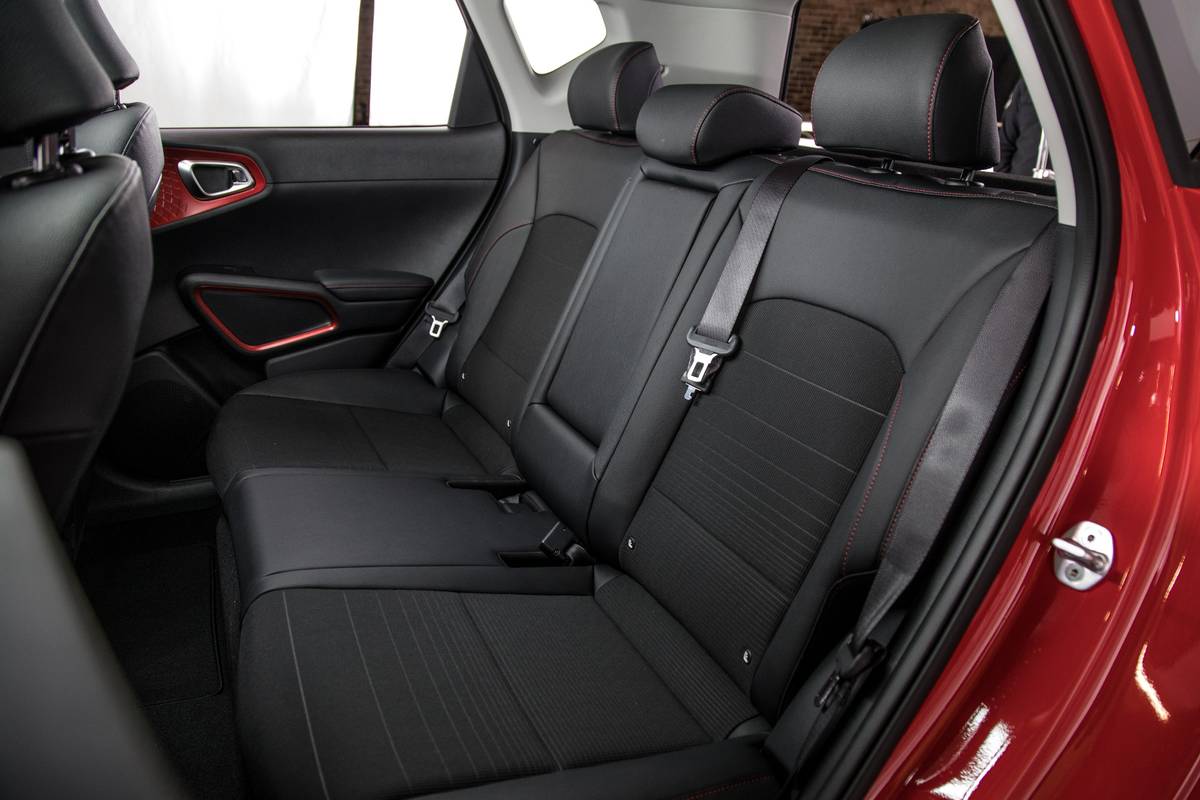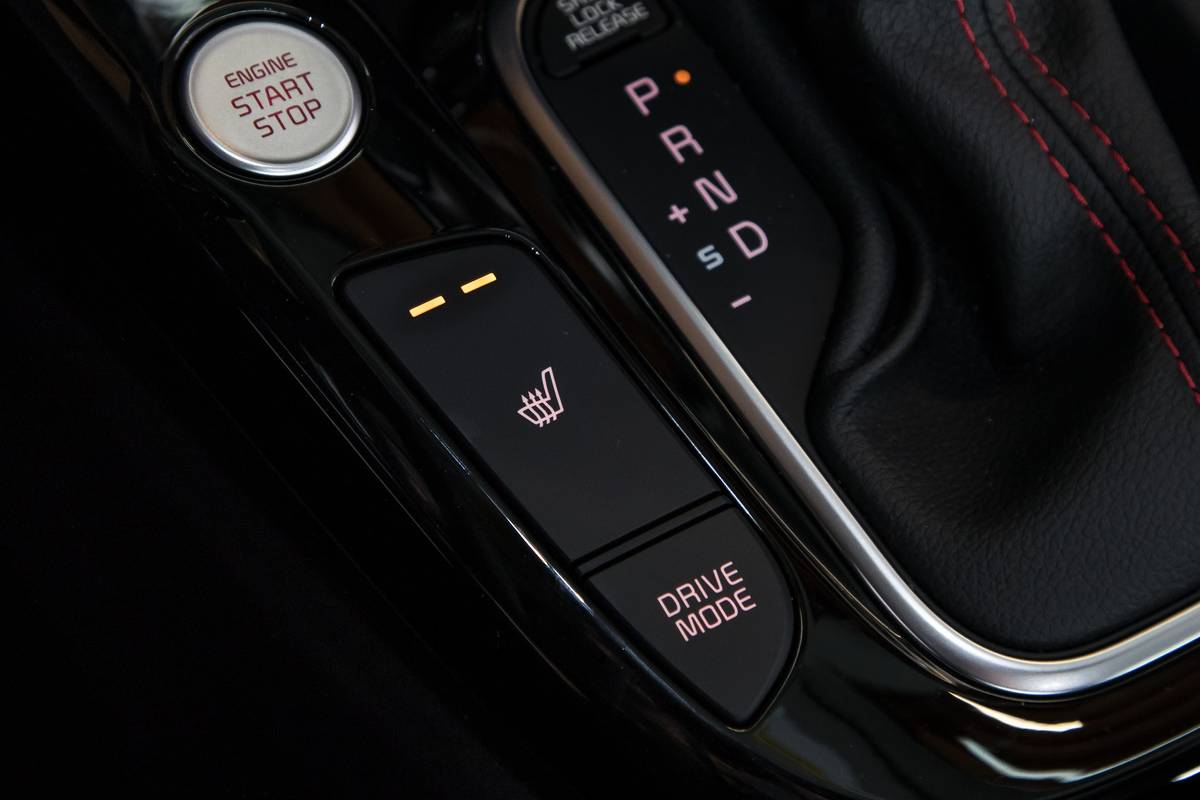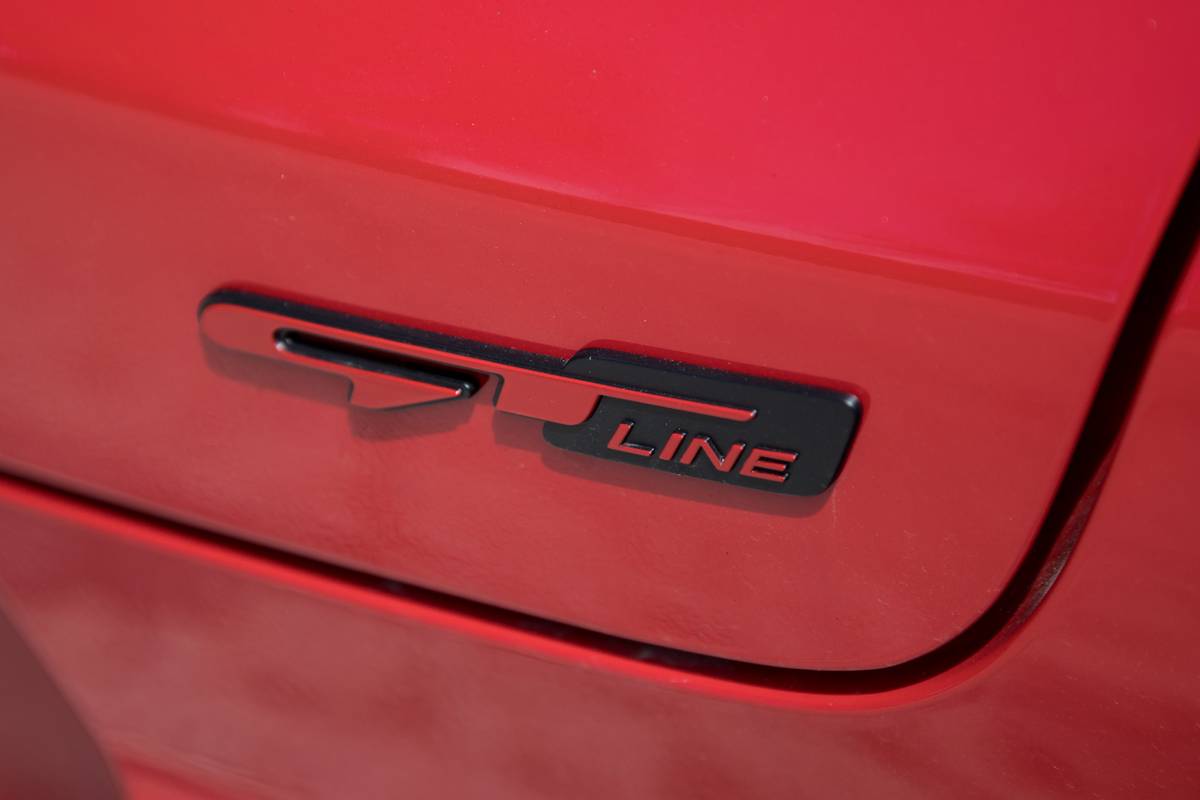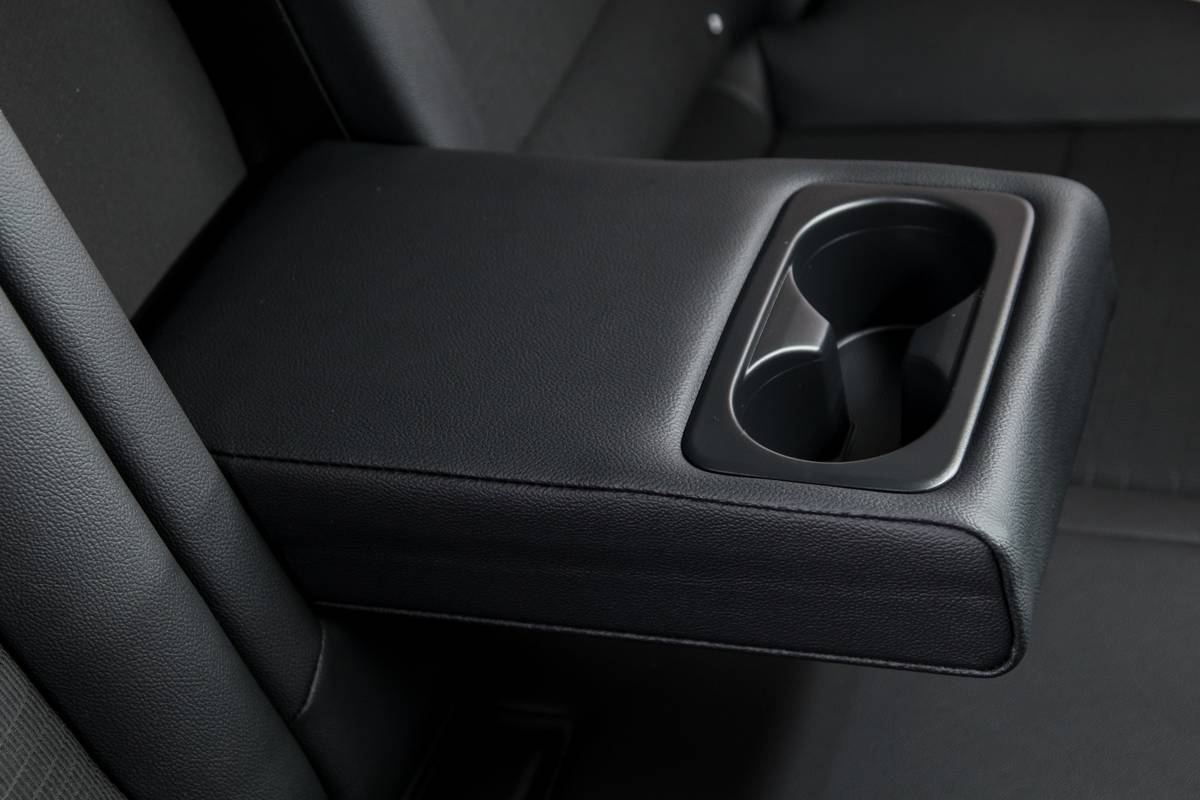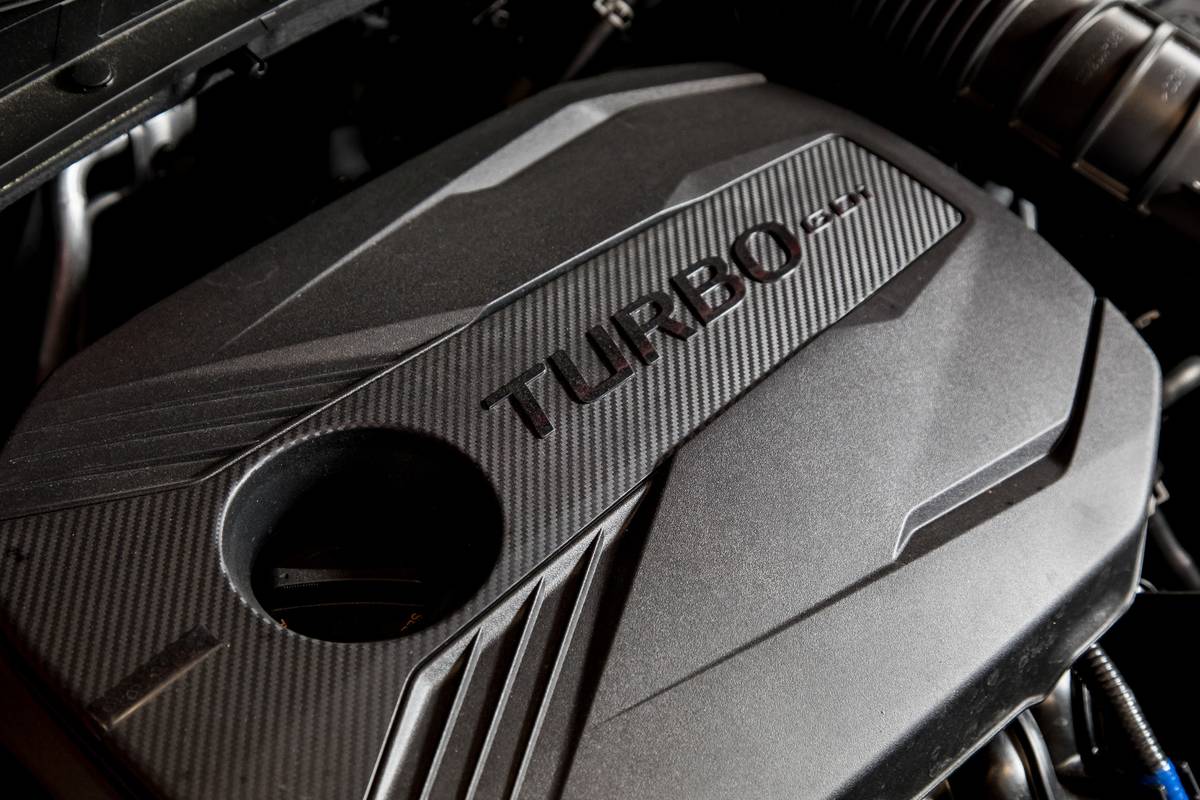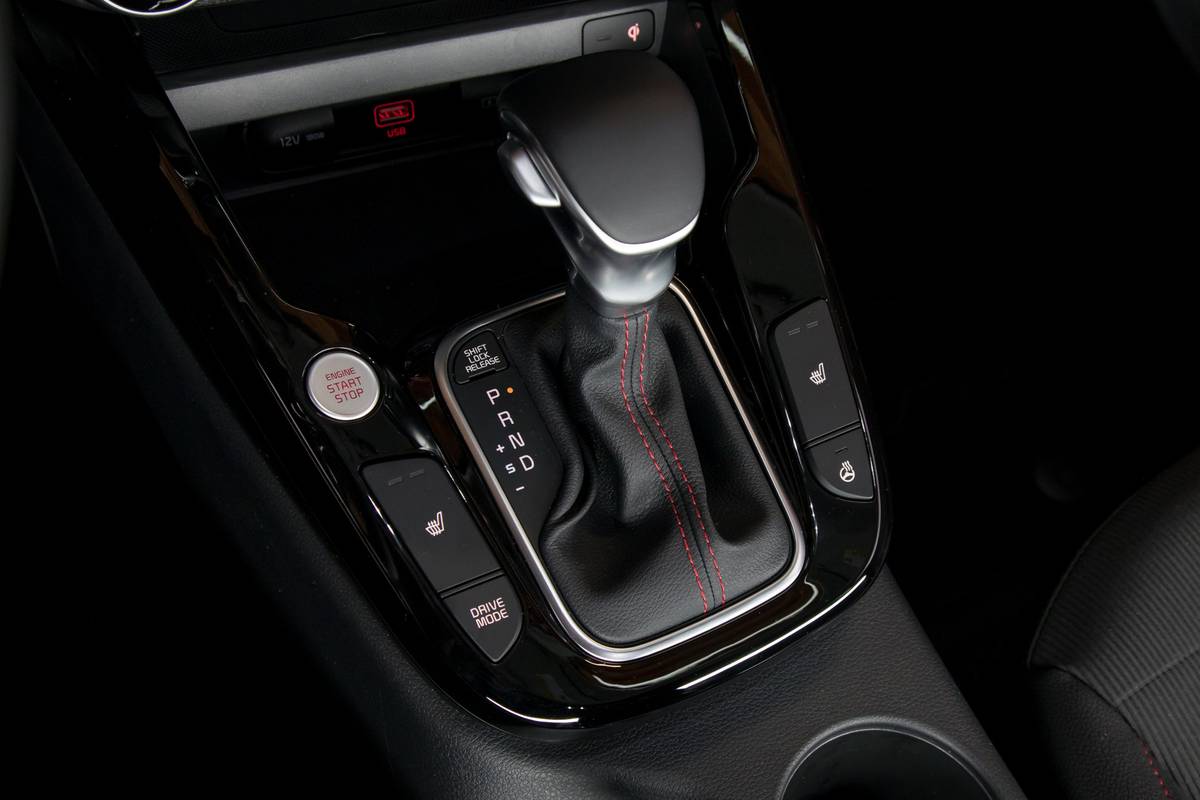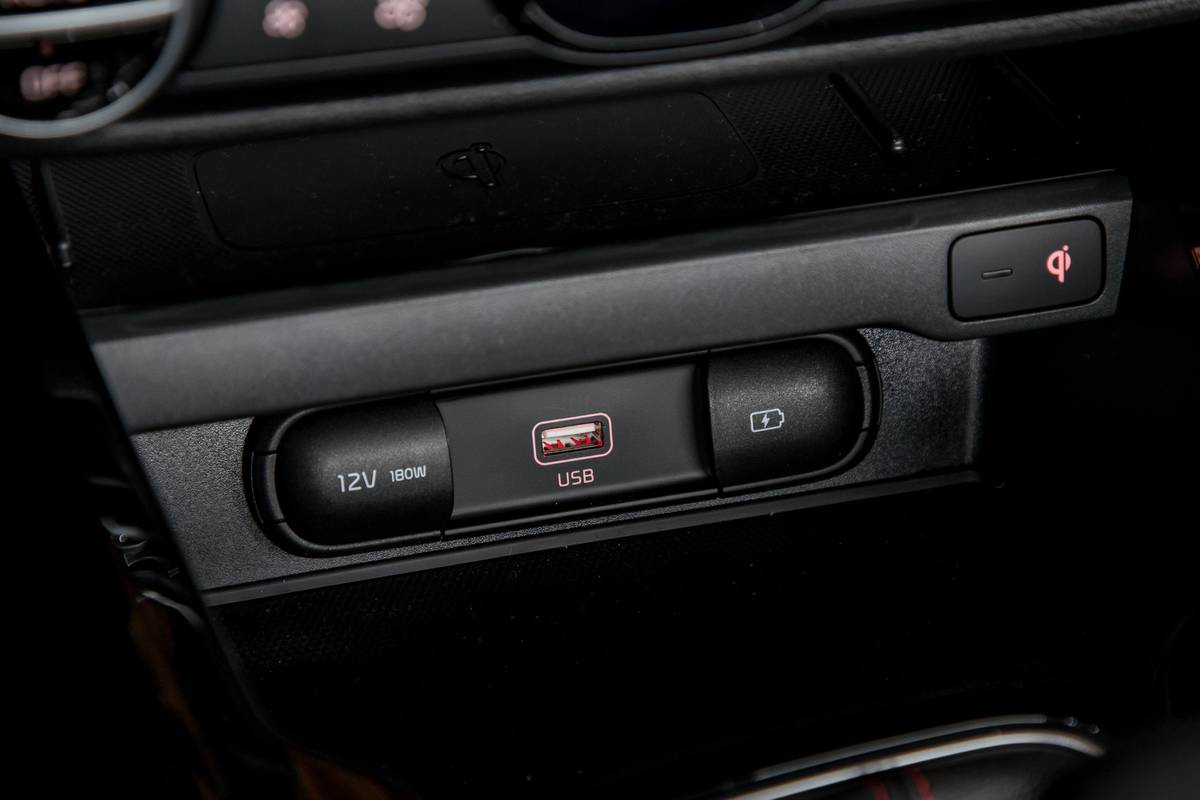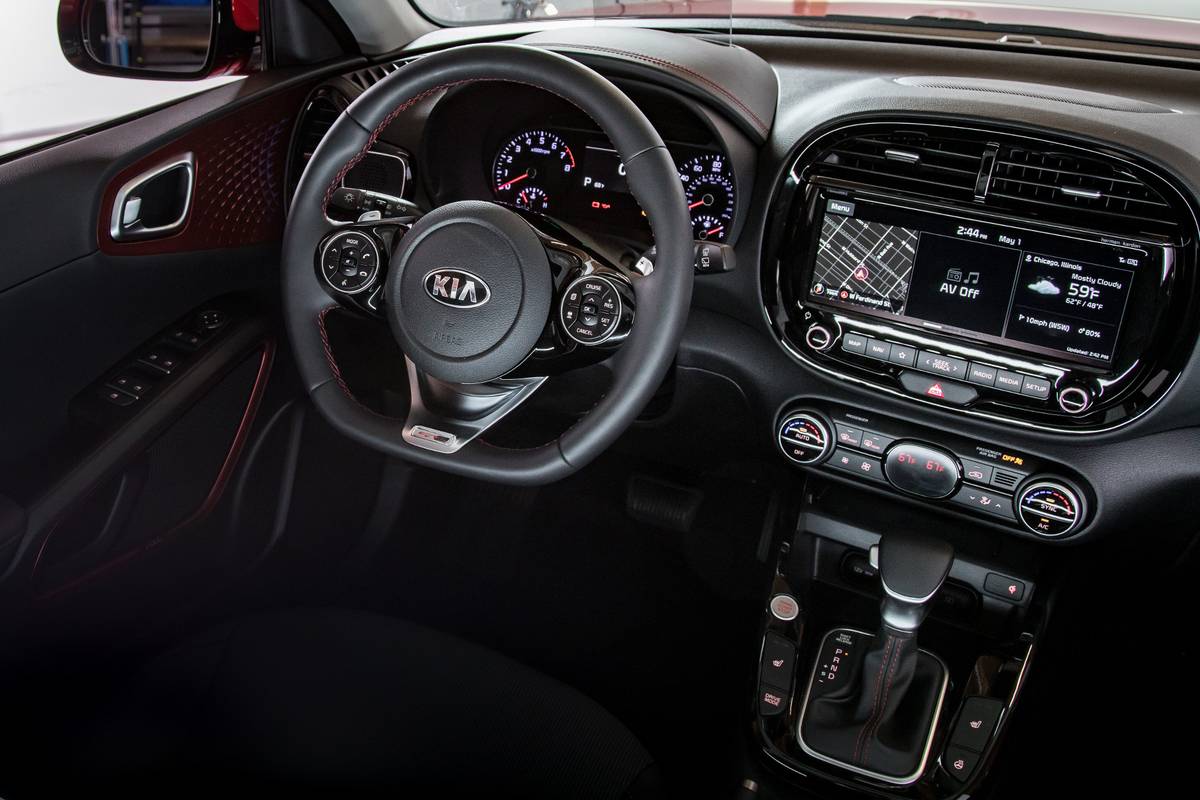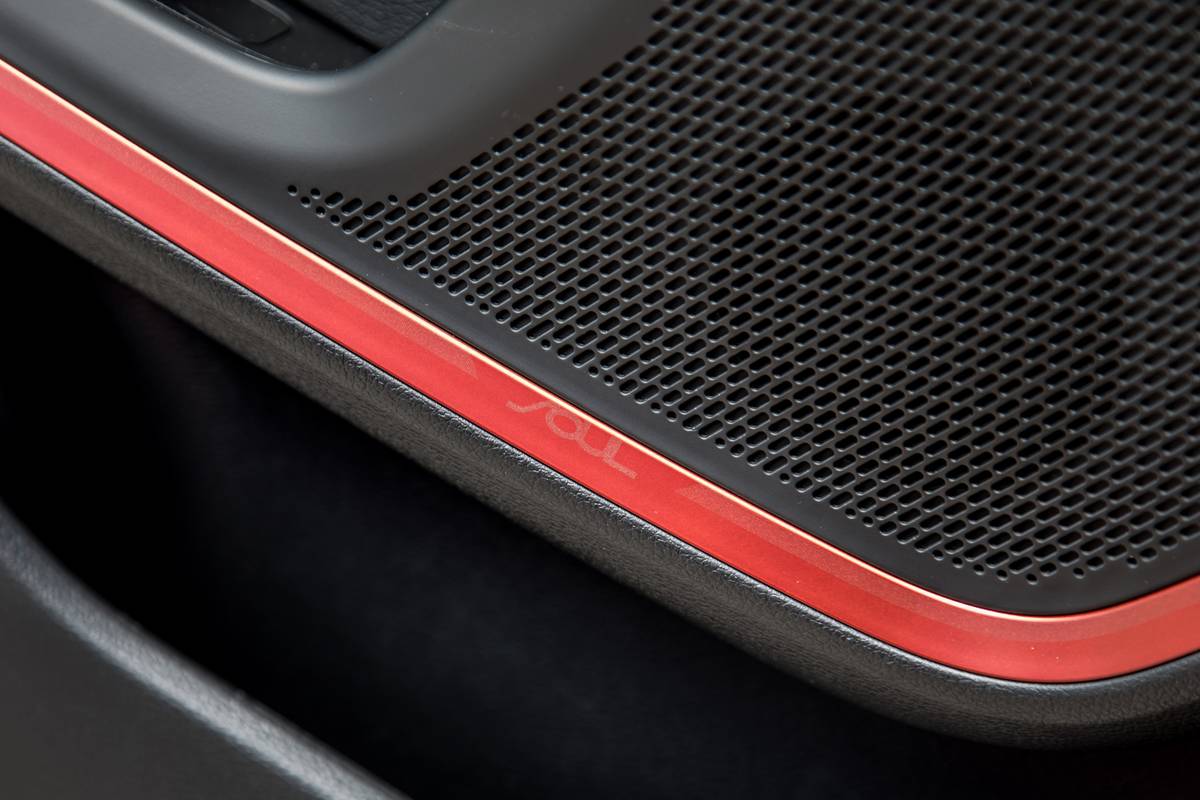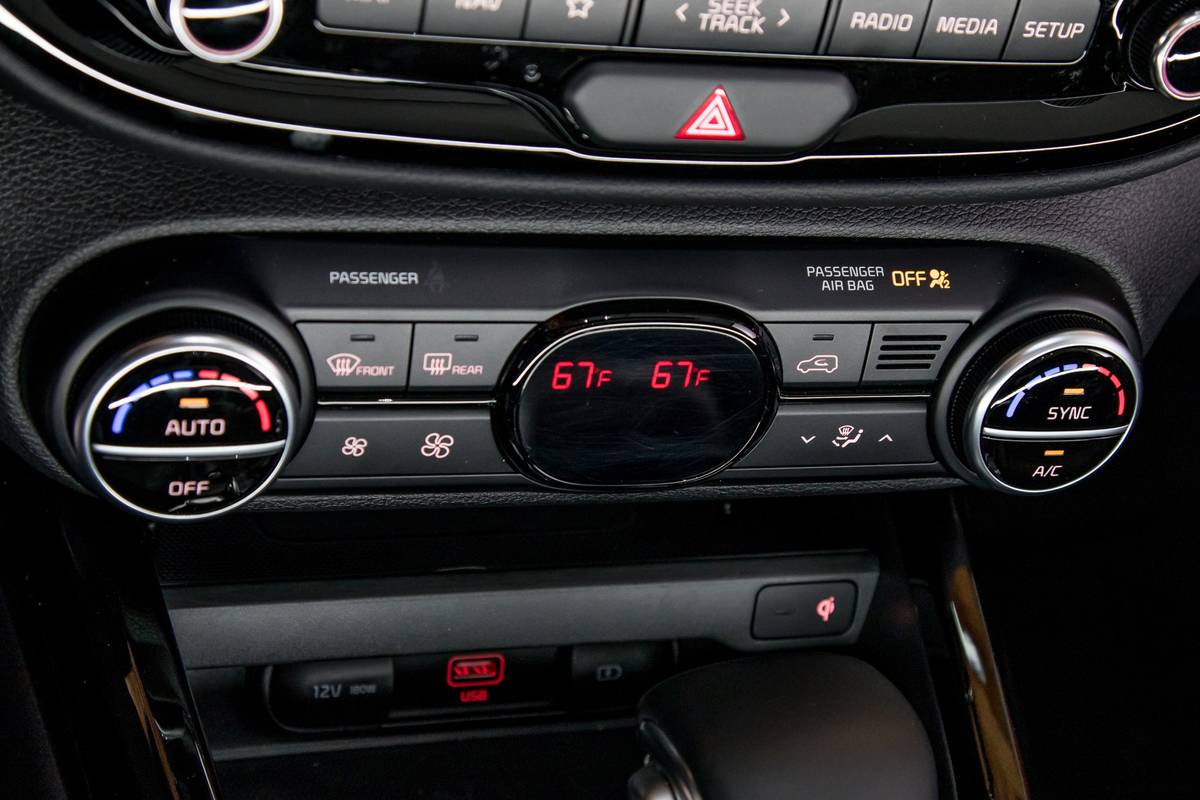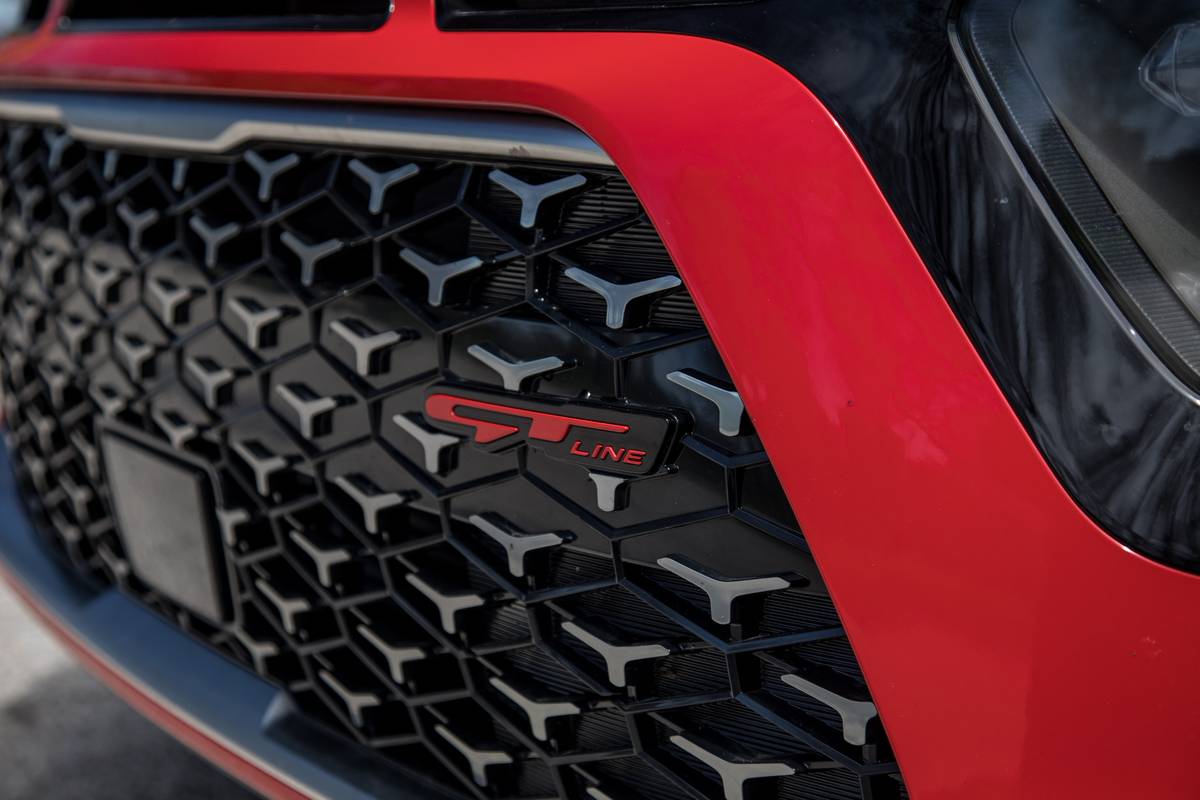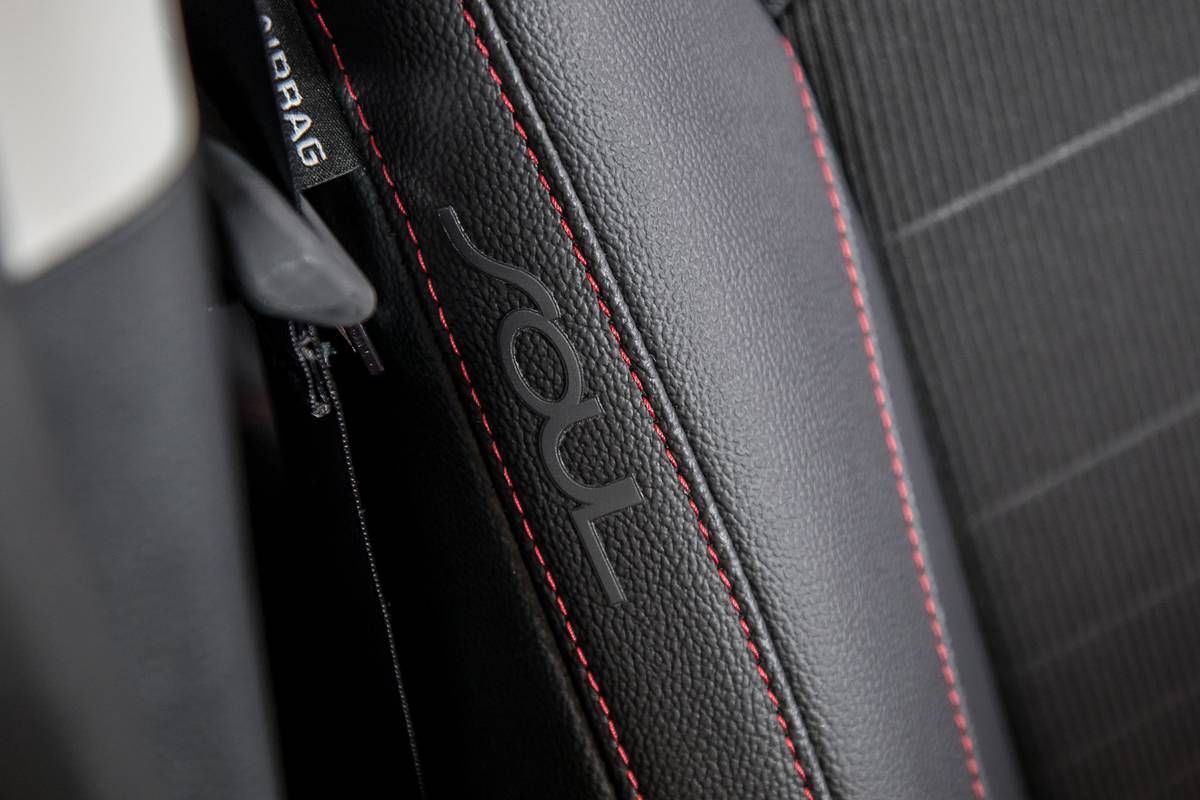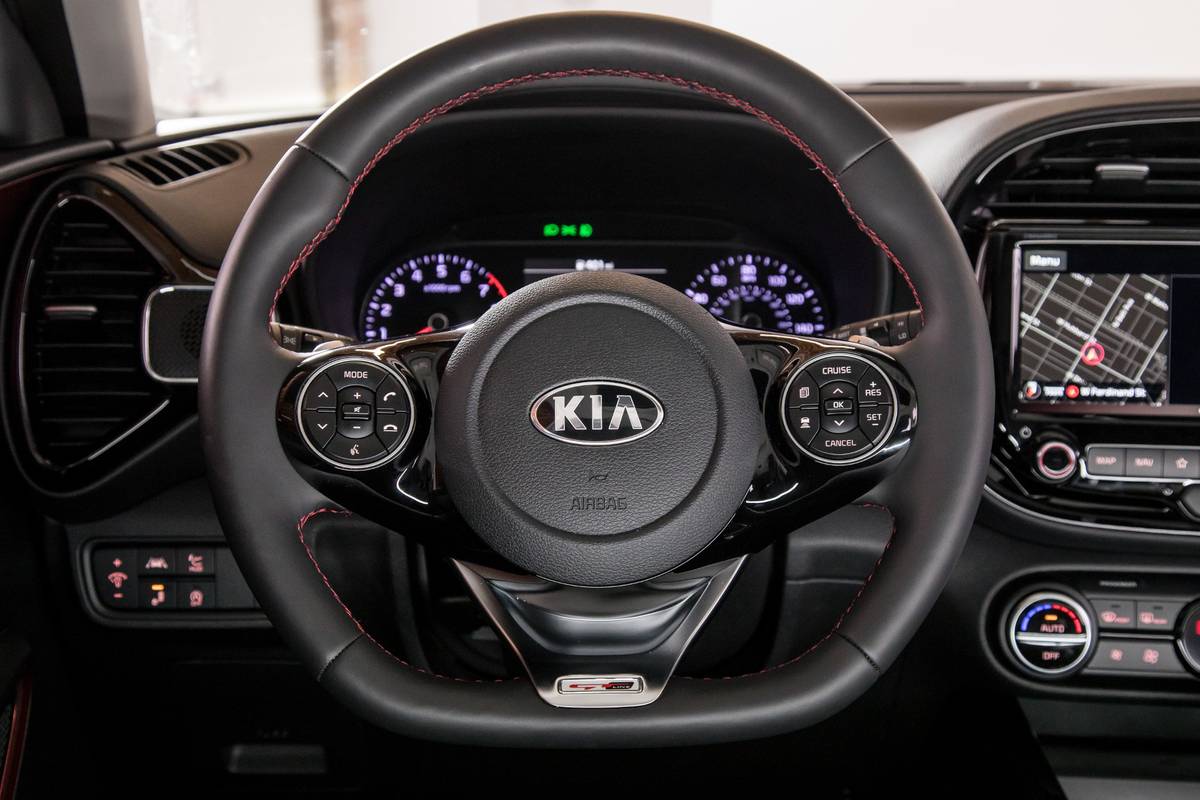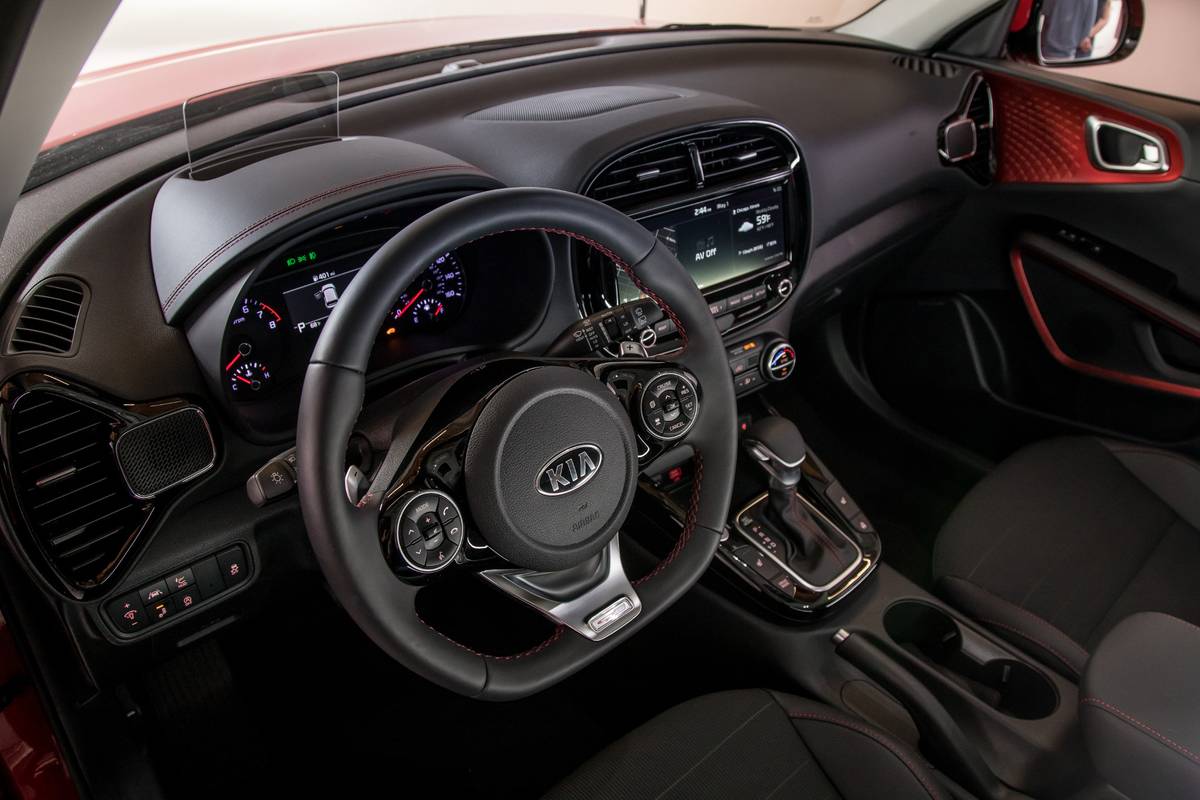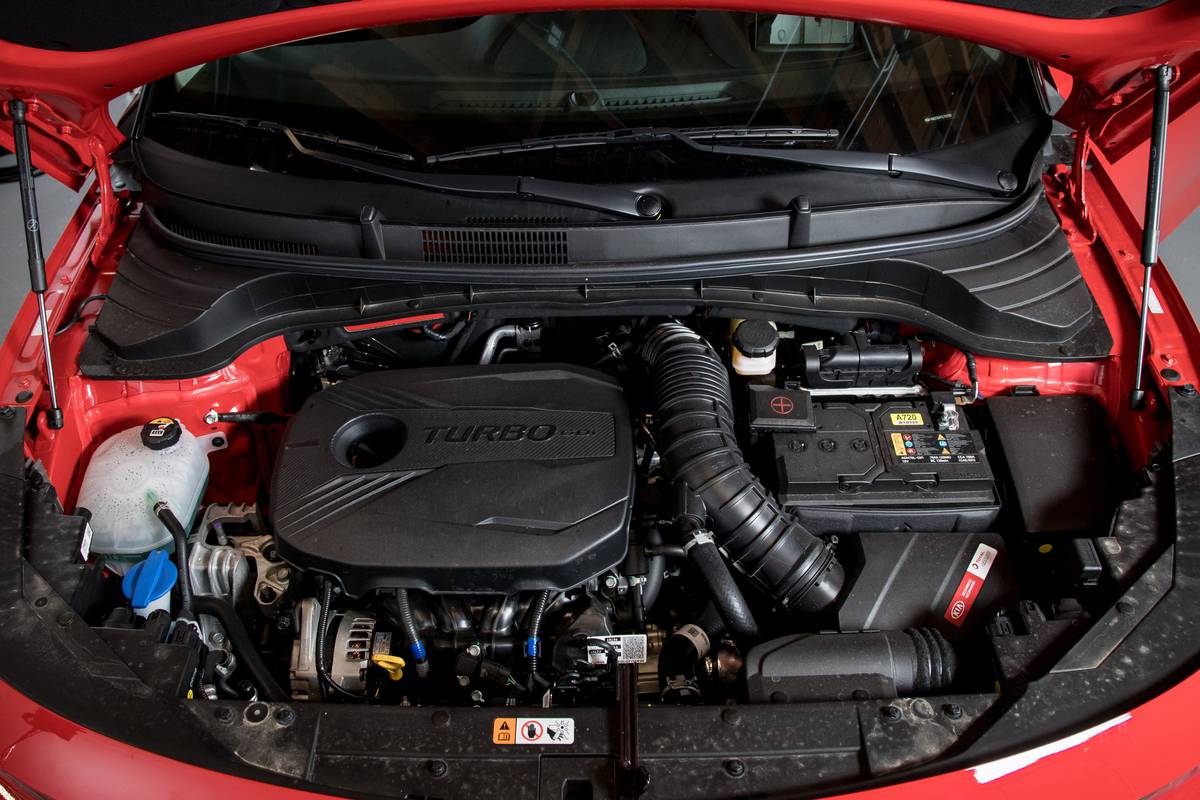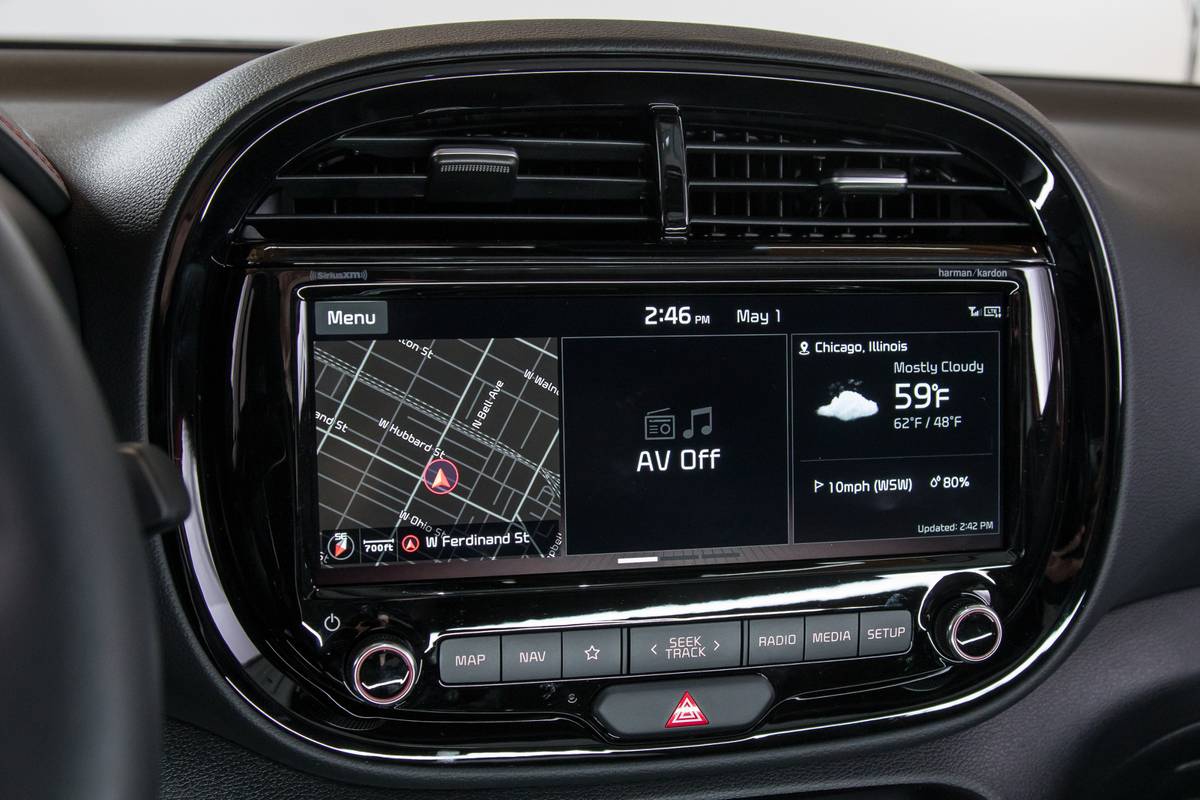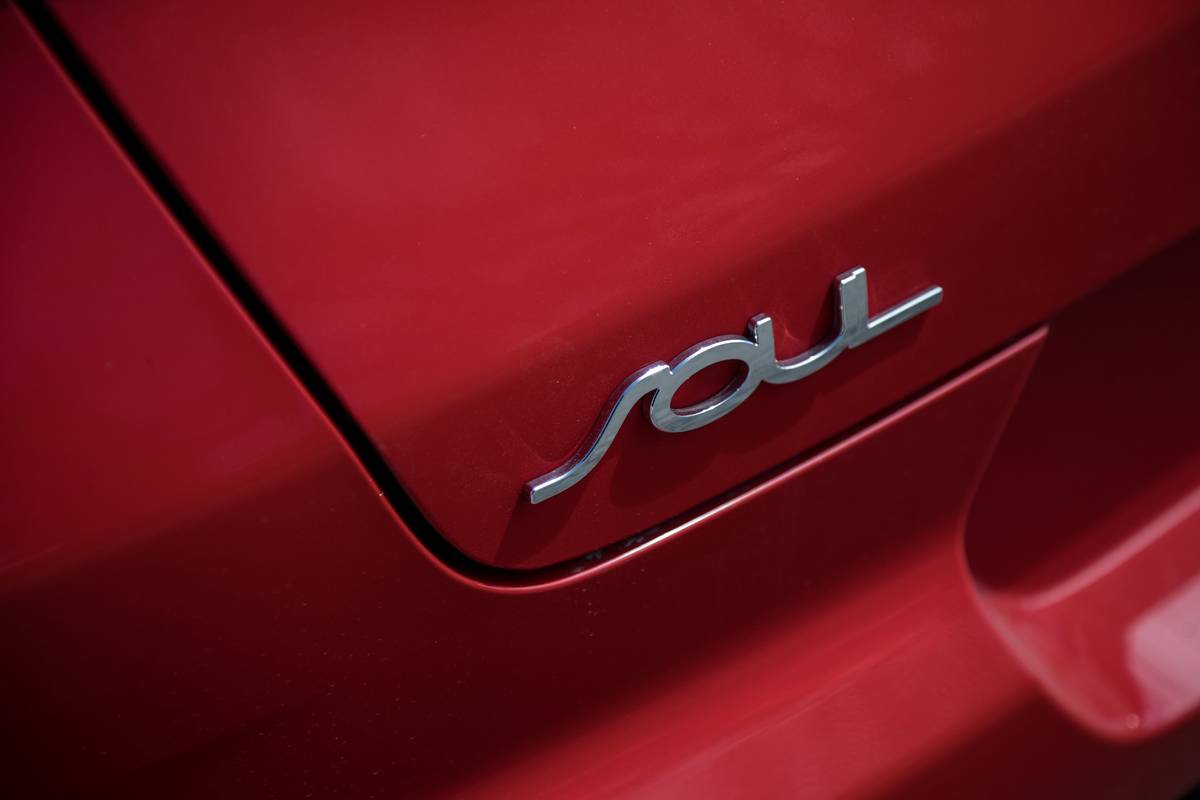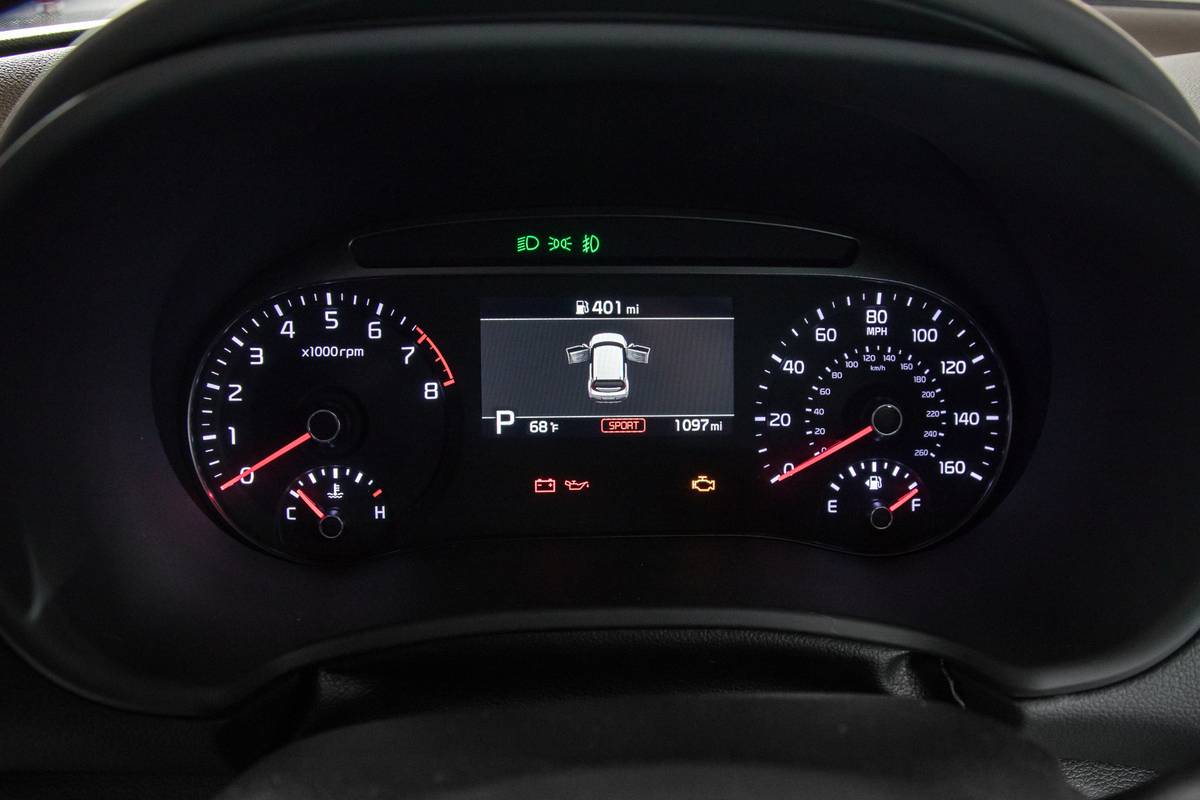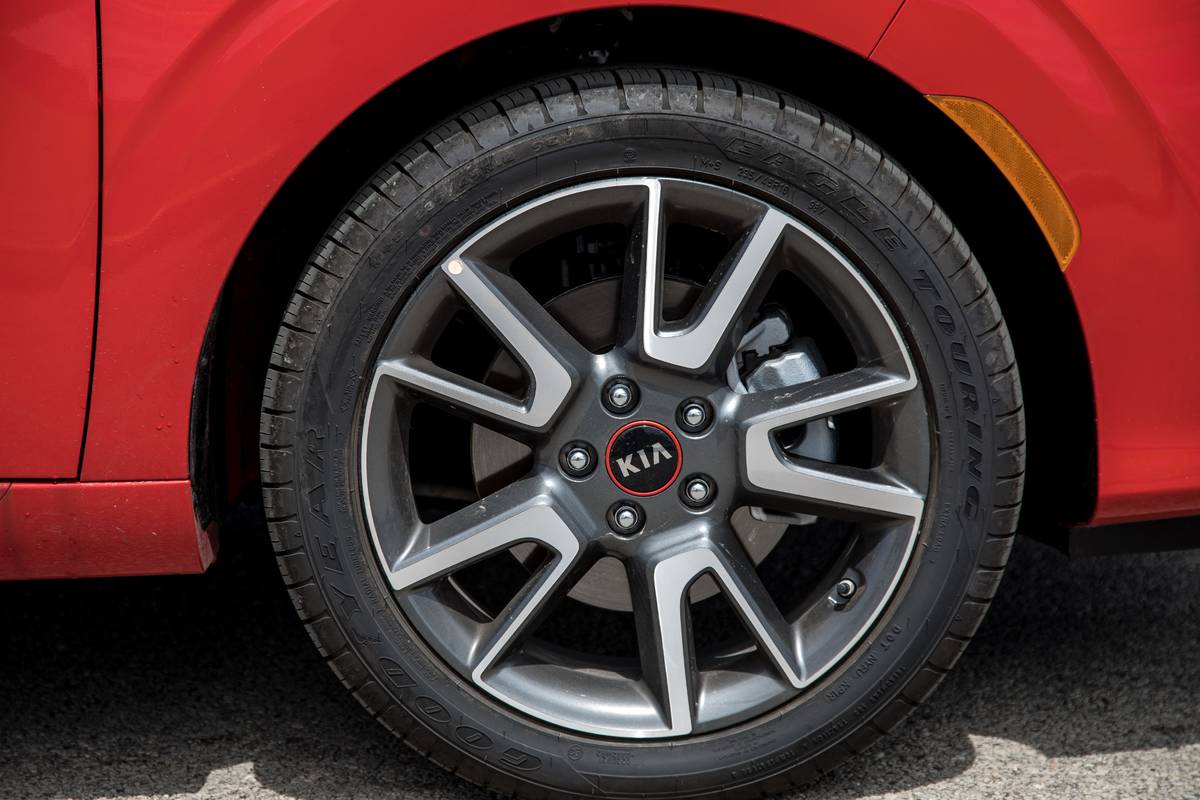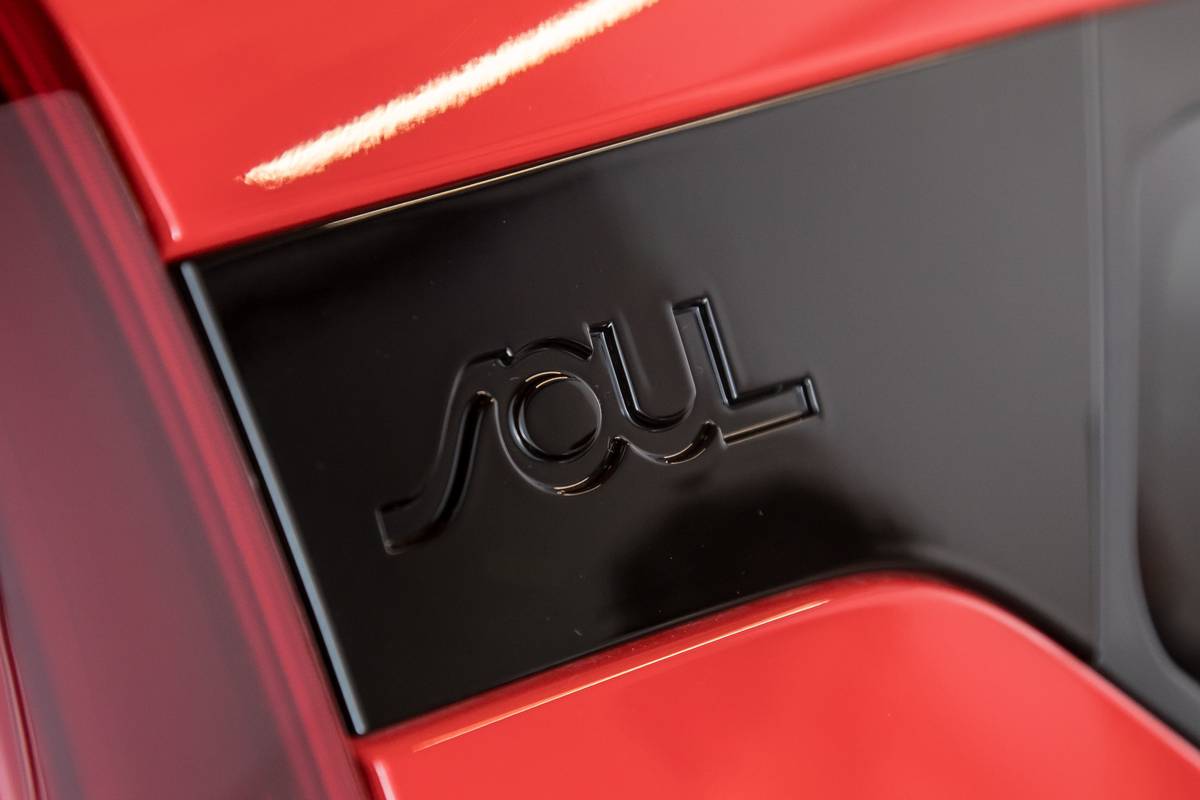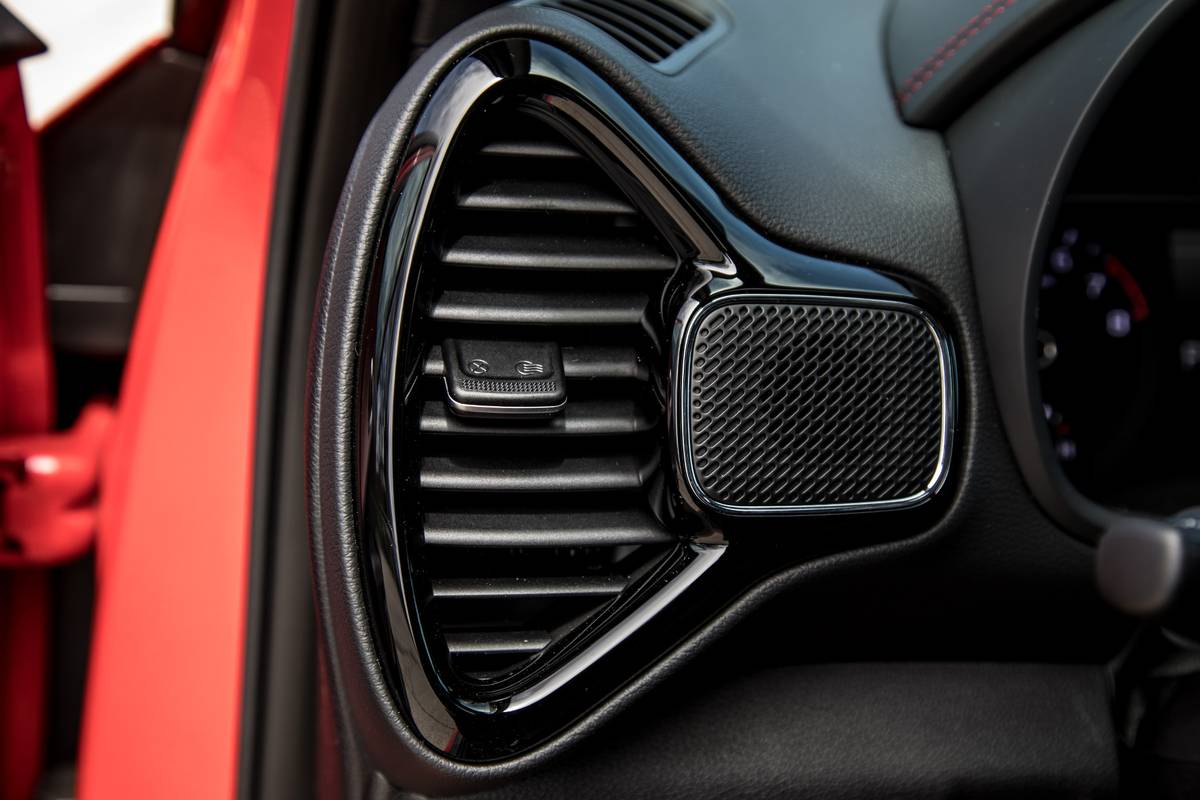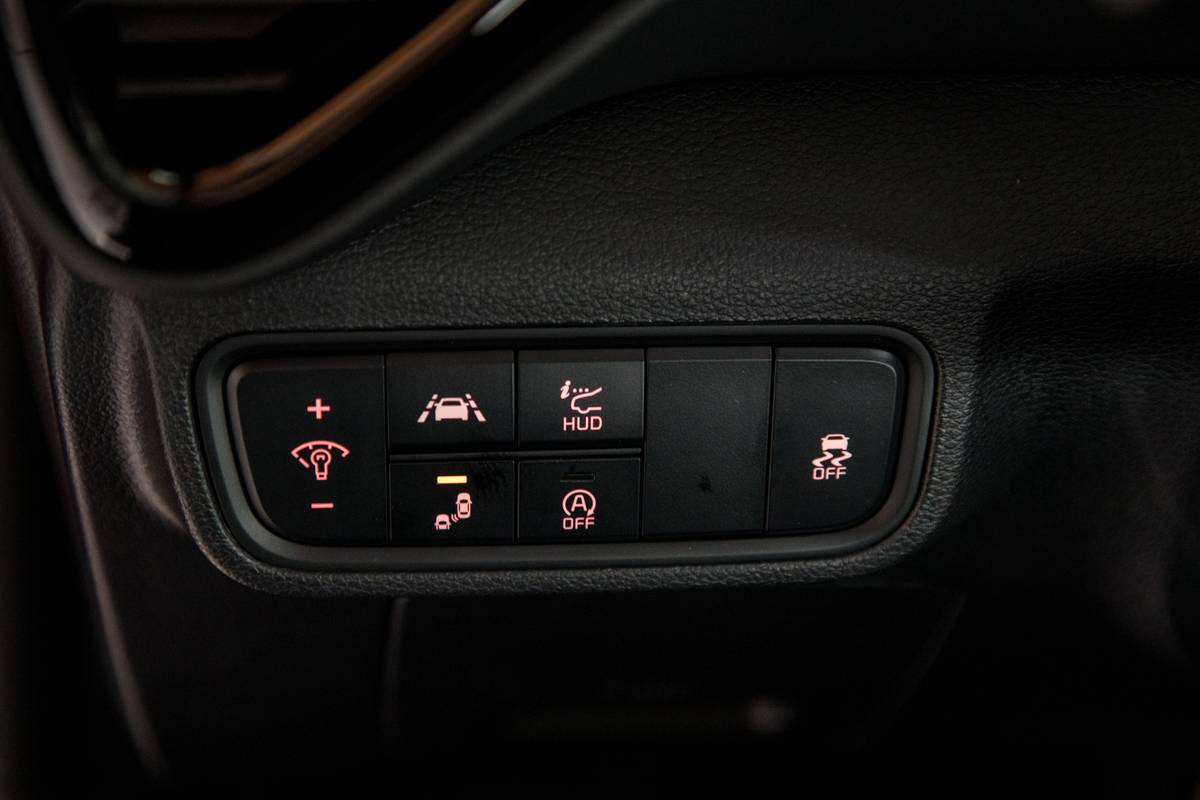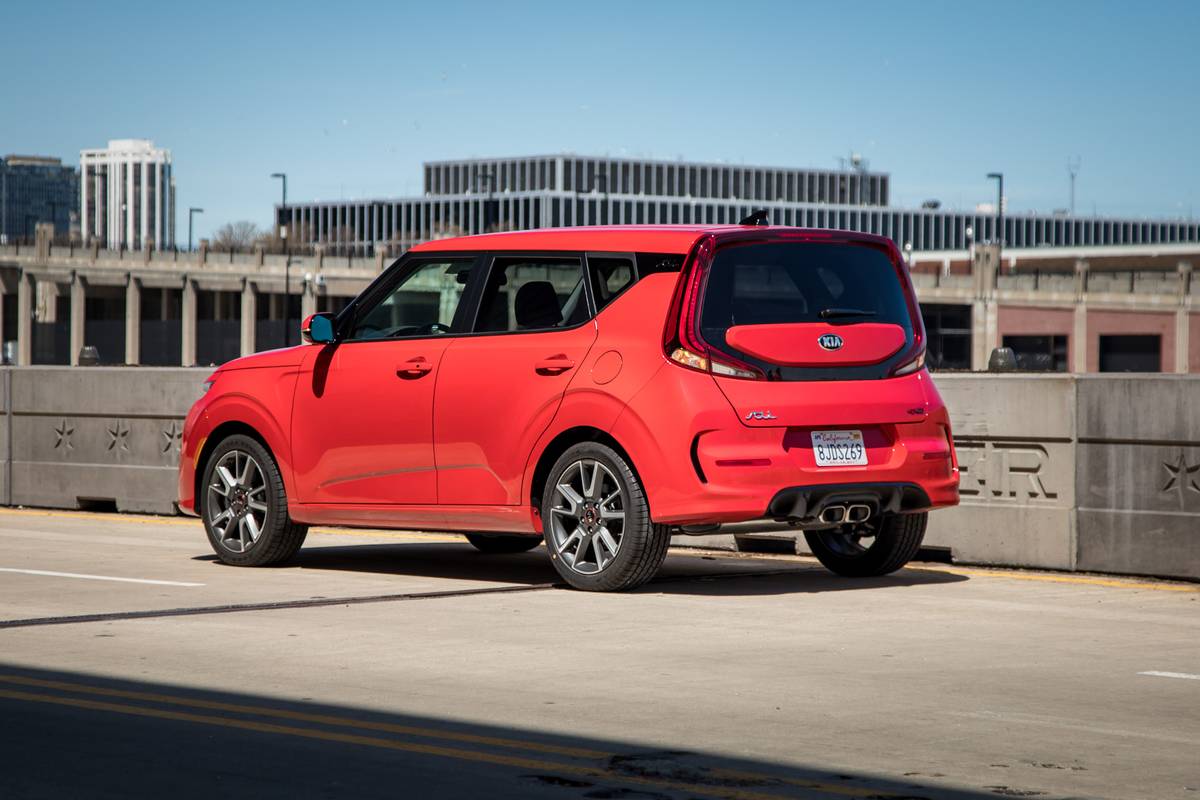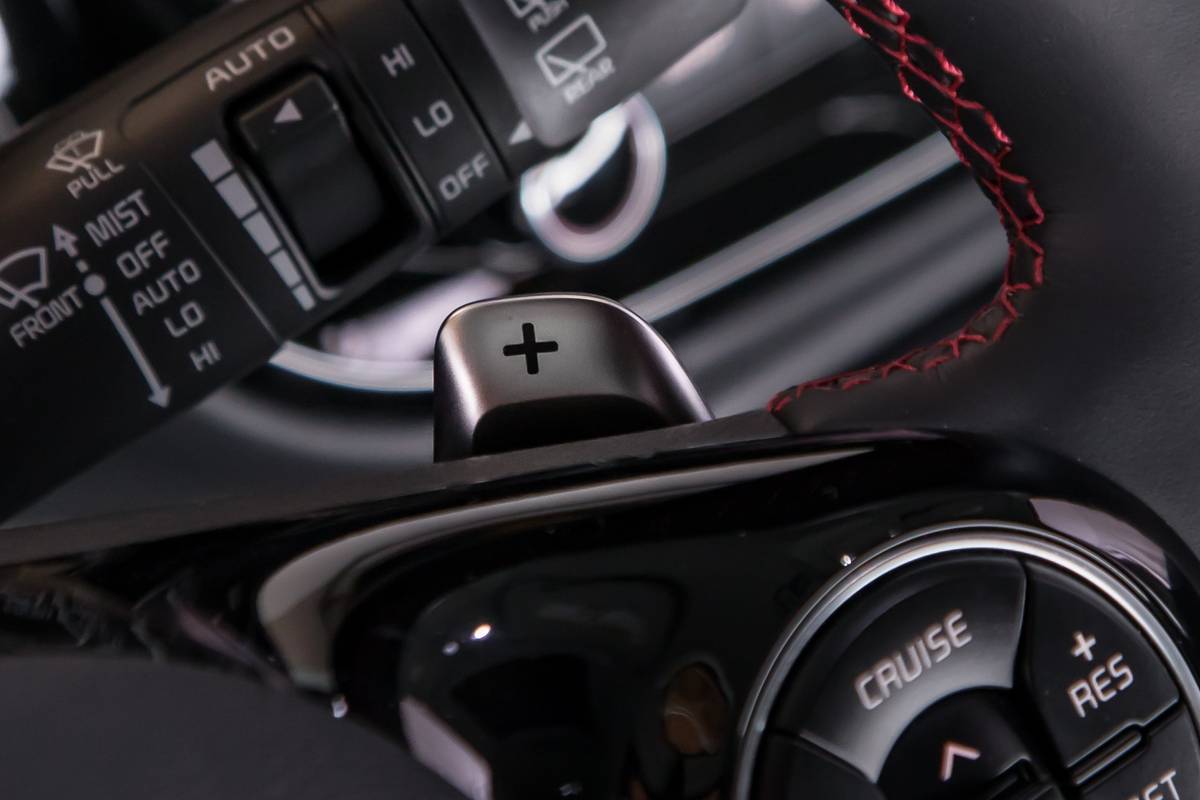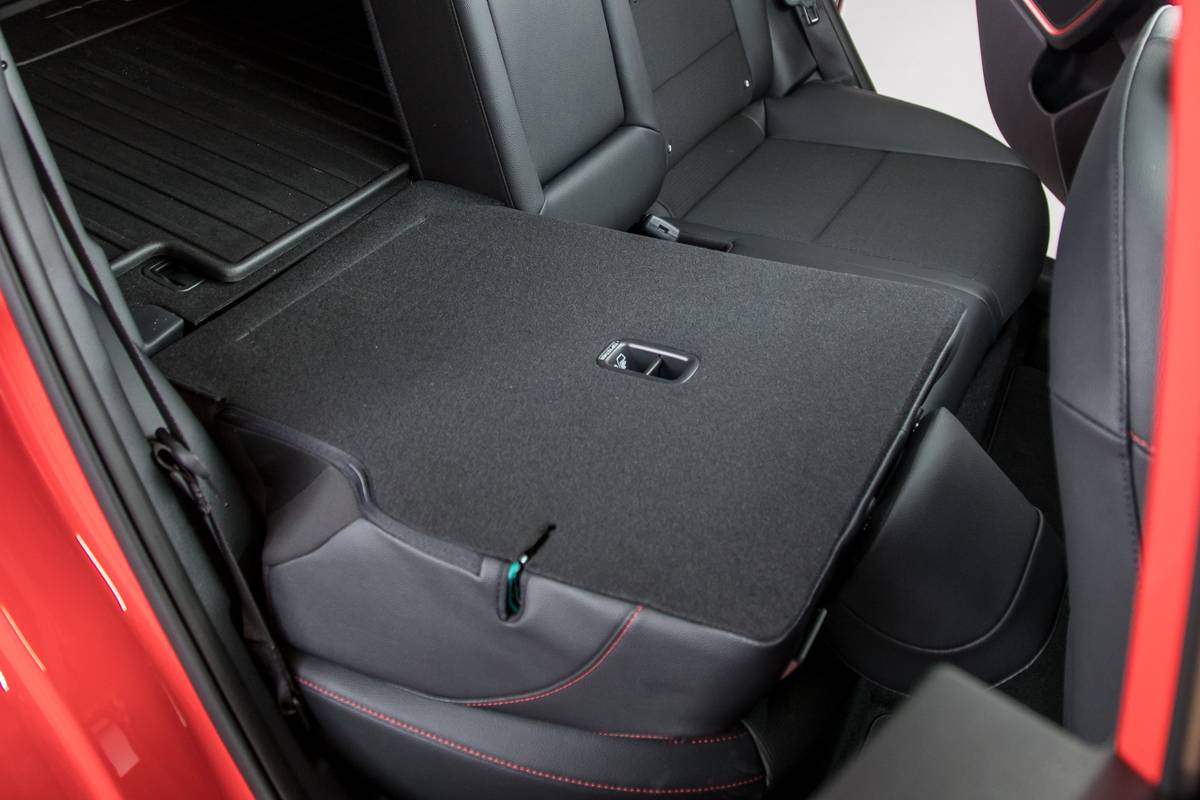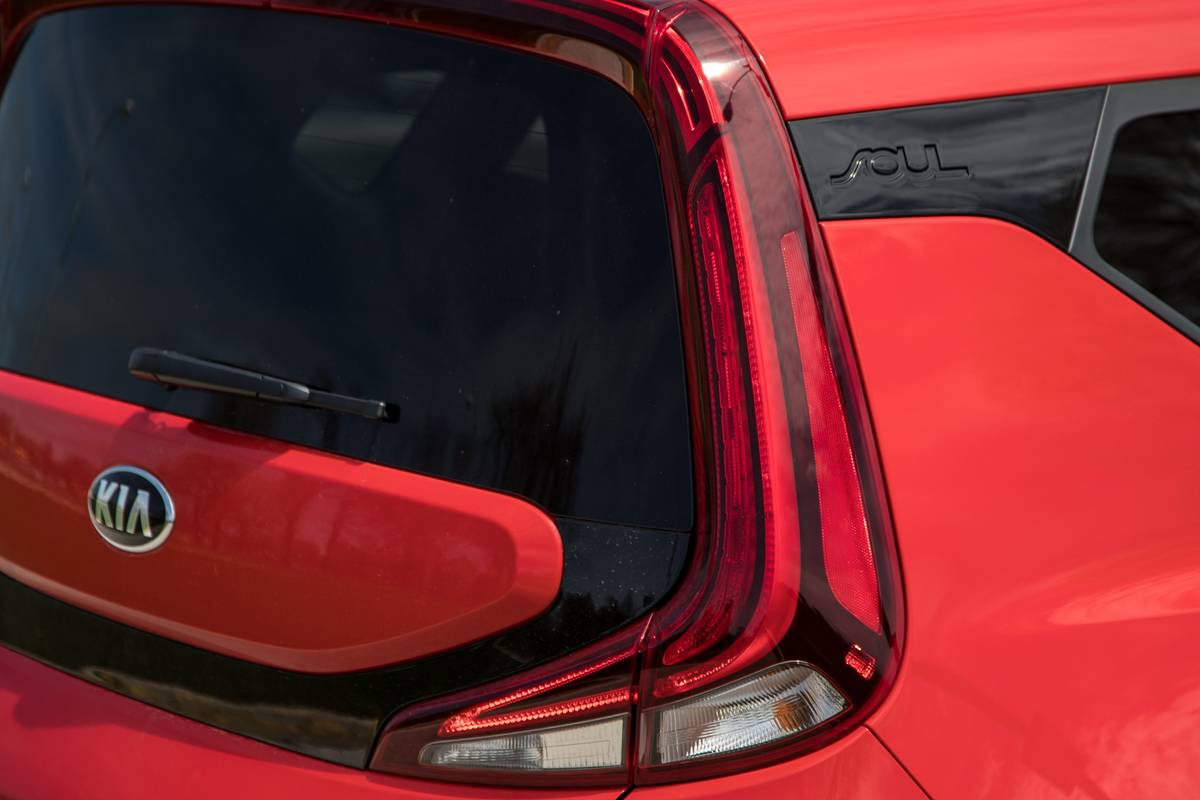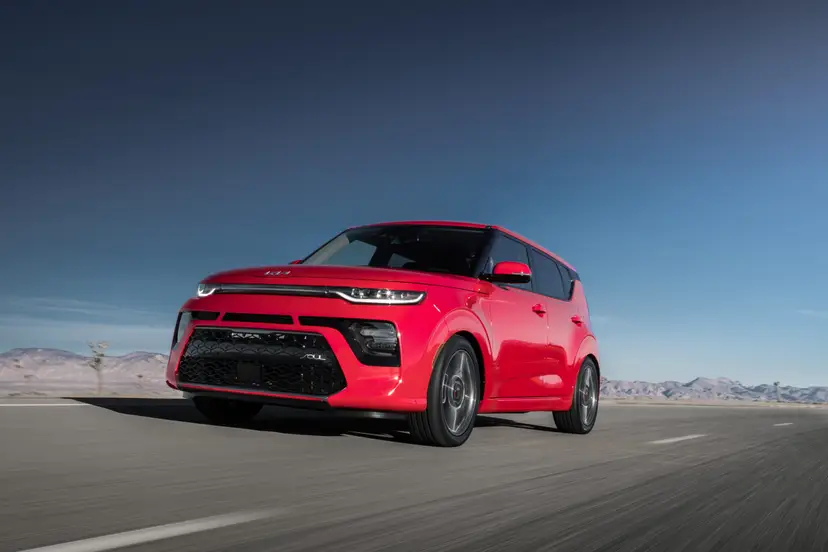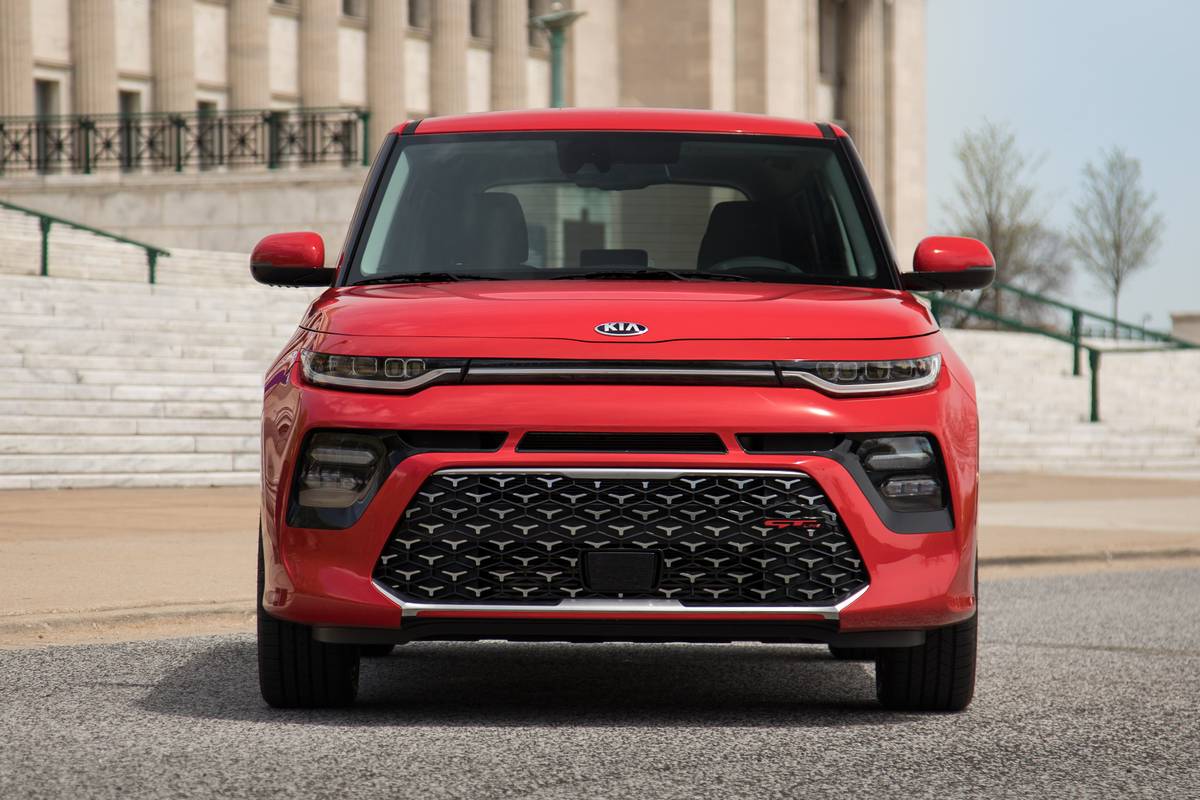
The verdict: The 2020 Soul stylishly updates the hatchback’s boxy look and is more fun to drive, but keeps its practicality, value and quirky personality.
Versus the competition: The urban-friendly hatchback’s lower trim levels offer a ton of value without feeling like econoboxes. The pricey top-trim turbo model, however, climbs up to a zone of stiffer competition.
The Kia Soul rolls into its second decade and third generation with its soul intact. The city-size hatchback is all-new, with more modern tech and better driving manners, but it retains its core practicality and value. It’s all wrapped in a new version of its boxy styling that still reminds me of a 1990s flying-toaster screensaver.
Competition has come and gone and come again. Boxy rivals of the past — the Nissan Cube and Scion xB — didn’t last, but new competitors include subcompact hatchbacks such as the Nissan Kicks and Toyota CH-R. The new Venue from sibling brand Hyundai will join the fray soon, too. All are chasing urban buyers and first-time buyers wanting to move away from used vehicles. Unlike similar-size small SUVs, these competitors avoid the complexity and weight of all-wheel drive, making them cheaper to buy and drive. In this group, the Soul continues to lead with a well-done redesign on a new platform.
One thing is less quirky, however, for 2020: The cutesy trim level names (formerly + and !) switch to the more Kia-like LX, S, X-Line, EX, GT-Line and GT-Line Turbo. We drove both a mid-level X-Line, which has added features and an appearance package, and a top-of-the-line Turbo.
Stylish Change of Mood
The 2020 sports a new face, replacing the old version’s big-eyed smile with a crankier expression. Squinting daytime running lights connected by “unibrow” trim sit over a trapezoidal grille with a perpetual frown. The headlights are tucked into lower bumper openings, where you’d expect to find foglights. It’s a more butch look, as is the more rugged X-Line’s extra body cladding, which breaks up the familiar slab side a little. In the rear, the still-flat roof runs to a liftgate that’s wider and lower for better access. The vertical taillights now connect across the top and turn in at the bottom to nearly surround the rear window. The roof has a “floating” look thanks to a Soul logo dividing the back pillar, and you can get it in contrasting colors on some trim levels.
Riding High
The tall interior feels open and roomy for the Soul’s size, with lots of headroom and high, chairlike seating. The front seats are still smallish and firm, but they’re slightly bigger and better bolstered than the previous generation’s; I found them comfortable. The rear seat is a standout for a subcompact, with plenty of headroom and legroom, a high (still firm) cushion and a comfortable seatback angle for adult riders, though the rising beltline makes it a little dark. Visibility to the front and sides is very good, though the rear window remains Soulfully small.
The cabin’s quietness is improved almost to the level of some more expensive rides, and materials have been spruced up, too. There’s still generous use of cheaper plastics, but there’s also softer surfaces on the places you touch most. The Soul rises above feeling cheap with creative design elements, such as a 3-D trim pattern on the upper doors, interesting triangular air vents and color accents. X-Line and higher trim levels get a chunky, leather-wrapped steering wheel. The X-Line has interesting cloth and vinyl upholstery, while the GT-Line Turbo has imitation leather.
Better packaging adds useful space. Door panel cutouts increase the bin size, center console storage is roomier, and under the center dash is a useful phone space (which can have a wireless charging pad in the top three trim levels). It sits above 12-volt and USB ports. Cargo space behind the backseat is still modest, but it’s up 5 cubic feet — to 23.8 — with the dual-level rear cargo floor in its lower position, 18.7 with it higher (making a flatter load floor). It’s a little less space than the Kicks but more than the C-HR. Folding the rear seats opens up 62.1 cubic feet.
No Model Is Tech-Deprived
A 7-inch touchscreen is standard on most trim levels, but the more expensive EX and GT-Line Turbo get a 10.25-inch widescreen system with newer software and navigation. The main advantage of the bigger screen is a useful split-screen function, but the base screen and system are fine. Both of Kia’s multimedia systems remain among the easiest to use, though both were a little slow to react to my touch. All trim levels include Apple CarPlay and Android Auto integration.
The GT-Line Turbo keeps the Soul’s signature music-lighting gimmick, with selectable color lighting in the 3-D door trim that can synchronize to a beat. An acceptable six-speaker audio system is standard, while the GT-Line Turbo gets 10-speaker Harman Kardon premium audio. That one is good, if a little too boomy for some ears.
A new feature on the GT-Line Turbo is an 8-inch head-up display, but it got the thumbs-down from multiple drivers. It uses an old-school plastic reflector atop the dashboard, not an image on the windshield, and we all found it hard to see and set too low for taller drivers. That’s in contrast to the Soul’s new heated steering wheel, which got a (warm) thumbs-up.
Peppy or Turbocharged
A revised and less buzzy 147-horsepower, 2.0-liter four-cylinder is under the hood of all Souls except the GT-Line Turbo, replacing the former base 1.6-liter and midrange 161-hp 2.0-liter. Despite fewer horses, it feels peppier around town than the old 2.0-liter thanks to quick throttle response, and it’s adequate on the freeway. (Don’t ask about the old base engine.) A new electric version of the Soul is also coming.
The new engine is mated to a standard six-speed manual on the base model, while others get a new-design continuously variable automatic transmission that first appeared in the redone 2019 Kia Forte compact sedan. It’s mostly unobtrusive and reasonably quiet. Artificial shift points limit the inherent CVT tendency to let the engine rev high while the car catches up; unless you mash the gas pedal, it can almost seem like a conventional automatic.
The more-grins option is the GT-Line’s 201-hp, turbocharged 1.6-liter four-cylinder with a seven-speed dual-clutch automatic that carries over from the 2019 Exclaim trim level. There is some brief lag off the line, but low-end torque is strong and the dual-clutch automatic is well-behaved, with none of the jerkiness some of its breed can have. Paddle shifters let you control shifts.
Both test cars had automatic engine stop-start systems to improve mileage, and both seemed overly eager to shut down and a hair slow to restart. We learned the system will restart without rolling if you slightly let up on the brake pedal, which made it more manageable. Gas mileage is improved, with the base engine EPA-rated 27/33/30 mpg city/highway/combined. The turbo checks in at 27/32/29 mpg.
Playful Nimbleness
Despite its height, the Soul stands out among rivals such as the Kicks for a chassis that feels planted and has good body control. Steering is direct and precise, though light. Cars.com reviewer Mike Hanley aptly described the Soul’s handling dynamics as “playful nimbleness.” That was true of both the X-Line, with the base suspension, and the GT-Line Turbo, with a sportier tune. Coupled with its tidy footprint, that agility makes the Soul an excellent companion for city traffic.
A downside of that firm suspension, however, is a sometimes busy and choppy ride on rough city streets. The ride is much improved for 2020, and it’s not harsh, but despite a wheelbase that’s an inch longer, the 2020 Soul remains short between the axles. That’s great for parking and squirting through traffic, but it’s hard on ride composure over dips and broken pavement. Both our test cars had 18-inch wheels — the biggest offered. The 16s or 17s on other trim levels might ride a little better.
Safety: It’s Complicated
The 2020 Soul expands the availability of advanced safety and driver assistance tech, but you’ll need a scorecard to track it by trim level — except for the base LX, which offers none.
S and EX trim levels come with a standard safety bundle that includes forward automatic braking, blind spot warning with rear cross-traffic alert, lane keep assist, lane change assist and a driver attention warning. The X-Line, meanwhile, which slots above the S in starting price, has lane keep assist and blind spot warning with rear cross-traffic alert, but offers no other features. The GT-Line with the 2.0-liter engine has much of the safety bundle standard, except lane change assist and blind spot warning with rear cross-traffic alert, which are available only in a $1,900 package that includes a moonroof.
The top-level GT-Line Turbo has all of those safety features, plus it adds adaptive cruise control and a more robust front collision system with pedestrian detection. The adaptive cruise control was a disappointment, however, because it doesn’t work to a stop. It comes irritatingly close (working to about 5 mph), then deactivates, alerting you in the instrument cluster that you’re on your own. Blame the manual parking brake.
The 2020 Soul has not been crash-tested by the Insurance Institute for Highway Safety. Once it is, results will replace the 2019 rating.
Excellent Value
The Soul starts at $18,485 for a base LX, which undercuts the base Kicks ($19,685) and C-HR ($22,240) — not to mention most subcompact SUVs, even with front-wheel drive (all prices include destination charges). And all Souls come with Kia’s five-year/60,000-mile warranty, plus 10 years/100,000 miles on the powertrain. Compare the Soul, Kicks and C-HR here. The X-Line trim level we tested was an excellent value at $22,615, including some extra features and appearance upgrades — though oddly without most of the safety tech that’s on the S model, which is $1,200 cheaper to start. You can compare the features of all 2020 Soul trim levels here.
The GT-Line Turbo piles on features and is more fun to drive, but the test car’s $28,485 sticker puts it in a tougher realm, near (depending on your taste) a sportier 2019 Volkswagen Golf GTI hatchback or a well-equipped subcompact SUV with all-wheel drive, such as a 2019 Honda HR-V EX-L. I’m all for more power, but most Soul shoppers would likely be happy (and up to $4,000 wealthier) in a fully optioned EX or GT-Line Soul with the peppy base engine.
Cars.com’s Editorial department is your source for automotive news and reviews. In line with Cars.com’s long-standing ethics policy, editors and reviewers don’t accept gifts or free trips from automakers. The Editorial department is independent of Cars.com’s advertising, sales and sponsored content departments.






































